Conference Program
Day 1: Tuesday, March 4
New York 1
Plenary opening session
08:50 - 10:15
Moderator
 Tony Robinson
Tony RobinsonFounder of Tire Technology Expo
08:50
Welcome address
 Tony Robinson
Tony RobinsonFounder of Tire Technology Expo
09:00
Sustainable tire footprint – strategies and how to realize them
 Prof Burkhard Wies
Prof Burkhard WiesHead of applied research and innovation
Continental Tires
Germany
 Jorge Almeida
Jorge AlmeidaHead of sustainability
Continental Tires
Germany
Explore Continental Tires' comprehensive sustainability strategy, with a special focus on the footprint of tires during their use phase. Jorge Almeida, head of sustainability, and Burkhard Wies, head of innovation and applied research, will provide insights into the company's latest achievements. Learn about Continental's commitment to improve service life, wear rate and rolling resistance to reduce costs, conserve resources and lower CO2 emissions.
What the audience will learn
- Overview about Continentals Tires Sustainability strategy
- Tire sustainability footprint for the product use phase (RR, Wear, wet, noise, renewable and recycled materials and tire design) - special examples and proof points
- Upcoming regulations with focus on emissions (TRWP, mg/kmt…)
- New Innovations & Technologies to manage the challenges
09:25
Tire Digital Product Passport (DPP) / Cirpass-2 pilot update
 Claire Fioretti
Claire FiorettiDirector of standards and regulations for connected mobility
Michelin
France
Within Cirpass-2, Michelin leads a team of seven stakeholders in three countries to experience the tire Digital Product Passport. Michelin and its partners are convinced that the digitalization of tires is a key lever to improve the circular economy. The tire DPP is an opportunity to design and promote more sustainable tires, give easy access to tire information to better retread and recycle tires, and find new valorization channels to recover material from end-of-life tires. The key benefits and outcome expected from DPP for the tire industry and ecosystems will be presented.
What the audience will learn
- What benefits can we expect from the digitization of the tire circular economy
- How the tire industry standards for tire electronic identification (embedded RFID and GDSO data sharing services) can support the future EU DPP for tires
- What are the objectives of the tire DPP pilot that Michelin is leading in the European funded project CIRPASS2
09:50
EU tire regulations: past developments and future directions
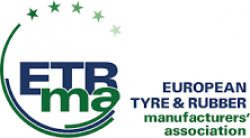 Dr Adam McCarthy
Dr Adam McCarthySecretary general
European Tyre and Rubber Manufacturers’ Association (ETRMA)
Belgium
This presentation will analyze the evolution of EU tire regulations during the last European Commission mandate and outline expected regulatory changes in the upcoming years.
What the audience will learn
- Key milestones: An overview of the last Commission’s legacy and its impact on the tyre industry.
- Balancing sustainability and competitiveness: The new Commission’s approach to future regulatory priorities.
- Circular Economy focus: Promoting the use of secondary raw material.
10:15 - 10:45
Break
Day 1: Tuesday, March 4
New York 1
Sustainability and the circular economy in the tire industry - Day 1
10:45 - 15:15
Moderator
 Dr Adam McCarthy
Dr Adam McCarthySecretary general
European Tyre and Rubber Manufacturers’ Association (ETRMA)
Belgium
10:45
What lies ahead for tire recycling in Europe – challenges and opportunities
 Gabriel Gomez
Gabriel GomezTechnical advisor
EuRIC
Belgium
As demand for tires grows with heavier cars, Europe’s tire recyclers are focusing on advancing circularity. From ensuring environmentally responsible end-of-life tire treatment in Europe to enhancing recyclability and striving for a science-based approach in managing hazardous substances in recyclates, they seek a regulatory framework that supports innovation and circularity in tire recycling.
What the audience will learn
- Key obstacles facing Europe’s tyre recycling
- Need for science-based safety standards in recyclates
- Preparing for regulatory shifts
- Ensuring environmentally responsible treatment of ELTs
11:10
Chain of custody challenges for renewable and recycled materials
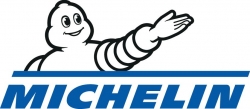 Brigitte Chauvin
Brigitte ChauvinR&D manager
Michelin
France
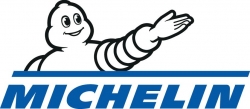 Christophe Durand
Christophe DurandVP sustainable material solutions and partnerships
Michelin
France
Various industries wish to use a mass balance chain of custody to frame claims relating to recycled or renewable content in their products. This approach is based on private certification companies (e.g. ISCC+, REDCert, UL Solutions, etc) and refers to different methodological practices allowing more or less disconnection with the true composition of the product. How can we prevent confusion arising from claims being associated to widely different realities? How direct and relevant should the link between the real recycled or renewable content of a product and the claim made for it be to avoid greenwashing?
What the audience will learn
- The different chain of custody models, especially the mass balance model
- Mass balance allocation methodologies for attributing claimed contents to products
- How to limit confusion arising from claims associated to different realities of the true physical composition
11:35
The Tire Industry Project: driving sustainability in the tire value chain
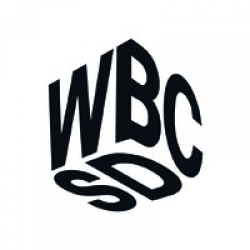 Dr Paolo Mazzatorta
Dr Paolo MazzatortaSenior manager research
World Business Council for Sustainable Development (WBCSD)
Switzerland
This presentation will discuss the current scientific challenges that our society is facing regarding tire emissions and how the Tire Industry Project (TIP) is funding research projects around the world to advance their scientific understanding. Additionally, some recent findings will be presented, focusing on a fundamental question: from the roadside, where do tire road wear particles go in the environment? Established in 2005, TIP is a voluntary initiative led by CEOs aimed at anticipating, understanding and addressing global environmental, social and governance issues that are relevant to the tire industry and its value chain.
What the audience will learn
- What is the TIP’s role in understanding the sustainability challenges of the tire industry
- How the potential hazard of Tire Road Wear Particles can be scientifically assessed
- How TIP is preparing for future research challenges
12:00
Around the world with tire circularity
 Martin von Wolfersdorff
Martin von WolfersdorffPrincipal advisor
Wolfersdorff Consulting Berlin
Germany
After a slow year in tire recycling in 2023, 2024 boasted several western tire recycling ventures that received investments and started building industrial facilities with pyrolysis technology. What are the success factors and what are the challenges for scaling up the production of recovered carbon black and tire pyrolysis oil? What are the different business paradigms in the Eastern world and in the Western world? What is the role of the tire industry? What is the expert forecast for these materials for the next years?
What the audience will learn
- Overview of global recovered carbon black and the tire pyrolysis industry
- Success factors and challenges for scale-up
- Different business paradigms in the eastern and western world
- The role of the tire industry
- Expert forecast for the next years
12:25 - 13:35
Lunch
Moderator
 Martin von Wolfersdorff
Martin von WolfersdorffPrincipal advisor
Wolfersdorff Consulting Berlin
Germany
13:35
Where have all the tires gone?
 Stephan Rau
Stephan RauTechnical director
wdk – Wirtschaftsverband der deutschen Kautschukindustrie eV
Germany
The circular economy for used tires is a good example of recycling that works. Keeping it that way depends on reliable market statistics. The German Rubber Manufacturers Association (wdk) has been recording the volume of used tires in Germany for almost a quarter of a century and draws important conclusions from this. However, waste tire disposal companies and recyclers have been recording dwindling volumes on the German market for some time. It is suspected that these quantities are being exported to non-EU countries to be incinerated or recycled using environmentally unsound methods.
What the audience will learn
- Tire recycling
- Arisings on the German market
- Unaccounted quantities
- Political support
- Sustainability
14:00
Circular economy update
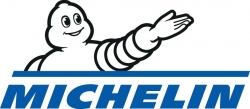 Christophe Duc
Christophe DucRFID senior group product manager
Michelin
France
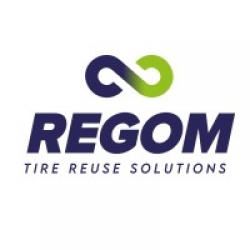 Bertrand Thoumsin
Bertrand ThoumsinSales manager - Europe area
Regom
France
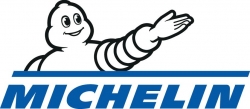 Sander Vermeulen
Sander VermeulenVice president – end-of-life rubber products recycling business
Michelin
France
The presentation will cover the following: How do we ensure we can develop a circular economy? What role do ELT collection and sorting methods play? What options do we have to increase ELT sorting quality and efficiency? Digitization is key for traceability and RFID/DPP are at the heart of the matter. The presentation will address collectors' hardware/software and provide user testimonials on new machines/digitization. The topic is global. RFID is a key enabler to couple data with a physical object and as such a key enabler to promote a circular economy in tires.
What the audience will learn
- What are the ingredients to achieve a circular economy
- Traceability and data management accompanying the tire throughout the different phases of its life is critical to achieving circular economy
- Partnership approach with ELT collection and sorting value chain is critical
- How collectors are evolving hardware/software, with concrete real-life examples
- The trend is global and moving fast. How RFID and Digital Product Passport support materials circularity
14:25
The impact of chemical regulations and sustainability initiatives on raw material suppliers
 Melanie Wiedemeier-Jarad
Melanie Wiedemeier-JaradManager regulatory affairs & sustainability
Lanxess Deutschland GmbH
Germany
The implementation of REACH and other regional chemical legislation is posing significant challenges for raw material producers on a global scale. The introduction of the new chemical classification at the EU level and the increasing requirements for sustainable environmental and health properties are driving many businesses to adopt a new approach. The presentation will focus on the European Commission's latest updates to the classification, labeling and packaging (CLP) regulation. The regulation applies to all chemical substances and mixtures placed on the EU market under REACH.
What the audience will learn
- New hazard classes: Substances that are persistent, bioaccumulative and toxic (PBT); very persistent and very bioaccumulative (vPvB); persistent, mobile and toxic (PMT); and very persistent and very mobile (vPvM)
- Fish acute toxicity test (OECD TG 203): The test helps assess the potential environmental impact of chemicals on aquatic life and toxicity data; results help to determine the toxicity (T) which has relevance for PBT and PMT classifications
- Ready biodegradability (OECD TG 301D) : Ready biodegradability data is crucial for the persistent (P) component which is a key factor in both PMT and PBT classifications
- Vulkanox 4060 (CCPD): An innovatve tire antidegradant
14:50
From waste to wealth: sustainable tire practices for a greener world
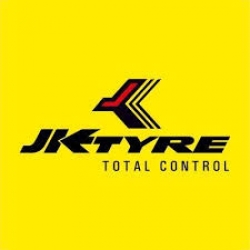 Dr Echchur Rangarajan Srinivasan
Dr Echchur Rangarajan SrinivasanManager, technical
JK Tyre & Industries
India
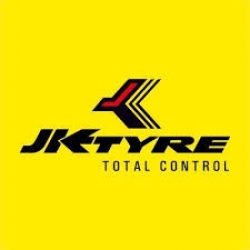 K V Nandakishore
K V NandakishoreSenior technical officer
JK Tyre & Industries
India
Tires are prone to damage, rendering them unusable despite significant remaining tread life. This results in wasted materials and increased pollution. This study investigates factors affecting tire repair sustainability and proposes design innovations to enhance tire longevity. By developing versatile tire designs that prolong life before failing due to damage, we can reduce tire consumption, lower pollution, and promote sustainability. This research integrates experimental mechanics and finite element simulations to address this critical issue.
What the audience will learn
- Mechanism of failure post damage
- Leveraging tyre design to enhance repair sustainability
- Leveraging Materials aspect for a More Sustainable Tyre Industry
15:15 - 15:35
Break
Day 1: Tuesday, March 4
New York 1
Innovations and best practices for advanced manufacturing and inspection - Day 1
15:35 - 16:50
Moderator
 Martin von Wolfersdorff
Martin von WolfersdorffPrincipal advisor
Wolfersdorff Consulting Berlin
Germany
15:35
Intelligent modularity at a time of transition
 Mike Norman
Mike NormanChief commercial officer
VMI Group
Netherlands
At Tire Technology Expo 2025 VMI will explore how its systematic approach to machine intelligence and modularity combine to offer tire companies new strategies for facing the challenges of transition to a new business model. VMI will show how machine intelligence is driving greater responsiveness and agility in tire building, while the reinvention of single-cell manufacturing, through UNIXX technology, is opening new possibilities for the modular extension of existing systems. This gives manufacturers better possibilities for managing new materials, shorter product runs and cutting emissions and scrap, while preparing for a very different future production approach.
What the audience will learn
- The implications of the historic transition now taking place from one business model to another in the tire industry
- The role emerging technology can play in helping companies develop new strategies and methods for making change work for them
- A roadmap that enables evolutionary change, with risks managed down and each step leading to another
- The industry can capture benefits today, including lower emissions, reduced scrap, greater flexibility and quality.
- Setting a course for a future in which manufacturing is smarter, more agile, less costly and more environmentally responsible.
16:00
Digital thread for a smarter tire design and sustainable manufacturing
 Peter Mair
Peter MairPrincipal consultant
Rockwell Automation Digital Services
France
The digital thread is the foundation of a connected enterprise that unites and integrates information technology (IT) and operational technology (OT) over the entire tire lifecycle (including the future digital tire passport). Peter Mair, principal consultant, will show, based on an integrated open IT/OT Enterprise Architecture example, how tire makers can effectively manage sustainability, compliance, product design and manufacturing complexity in a continuously evolving market environment. With the right orchestration of enterprise and expert SW, technology bricks such as digital twin, AR/VR and AI, organizations can better drive their business goals.
What the audience will learn
- Maximize the benefits from the digital thread that spans the entire value chain over the whole tire lifecycle
- Deep insights with multiple viewpoints from product design to manufacturing enriched with digital twin, AR/VR and AI capabilities
- Fast-scaling deployment and future business flexibility thanks to a unified open IT/OT architecture
- Capture CO2 scope and sustainability initiatives for continuous improvements such as resource reduction, increased OEE and quality
- Create synergies around the future digital tire passport
16:25
Combination of silence and sealants – the future of PCR
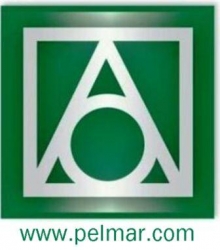 Jacob Peled
Jacob PeledExecutive chairman
Pelmar Engineering Ltd
Israel
With the fast development in recent years of electric vehicles, the tire industry has had to cope with new requirements, which relate mainly to tires being more silent and resistant to punctures. Previously, only one of the above parameters was employed in various technologies. In recent years it became necessary to combine the two technologies to obtain a tire that will not only be safer and quieter but also easier to handle and able to maintain the lowest rolling resistance and abrasion rate.
What the audience will learn
- Methods employed with the aim of automation and speed
- Tires have become the noisiest component in new electric vehicles
- Tires are severely polluting items that need to be developed and controlled
- Methods of saving space, manpower, energy and time in the application of foam
- Methods of automation and health issues in the application of sealants
Day 1: Tuesday, March 4
New York 2
Developments and innovations in materials, chemicals and related processes - Day 1
10:45 - 16:50
Moderator
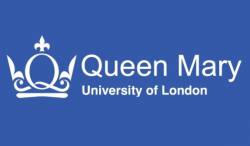 Dr Keizo Akutagawa
Dr Keizo AkutagawaVisiting professor
Queen Mary University of London
UK
10:45
Influence of dynamic-mechanical load on thermal-oxidative aging of elastomers
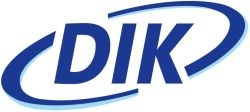 Prof Ulrich Giese
Prof Ulrich GieseManaging director
Deutsches Institut für Kautschuktechnologie eV (German Institute of Rubber Technology)
Germany
Depending on the elastomer composition, thermal-oxidative aging processes lead to radical polymer degradation in competition with the formation of a secondary network. During dynamic deformation, accelerated cracking and softening of a component with the release of new surfaces for accelerated O2 input is to be expected. Dynamic aging experiments with and without oxygen were performed using time-to-failure analyses. The relationship between crack formation and DLO effect (diffusion-limited oxidation) is investigated and characterized by highly sophisticated analytical methods.
What the audience will learn
- Princples of elastomer ageing
- Temperature-dependent balance between oxygene consumption and oxygene diffusion (DLO-effect), related to crack formation
- Contribution of different parameters to the complex aging mechanisms
- Analytical characterization of aging effects
- Experimental approach for aging experiments under dynamic load without oxygene
11:10
'Rethinking' sulfur curing, part 1
 Prof Anke Blume
Prof Anke BlumeHead of elastomer technology and engineering
University of Twente
Netherlands
Since Charles Goodyear discovered the sulfur curing of NR in 1839, many studies have been carried out to understand its mechanism. Nowadays, the broadly accepted mechanism includes an activated accelerator Zn-complex which enables sulfur coupling to the polymer in the allylic position to the double bond. Modern passenger car tire treads no longer contain natural rubber but a blend of SSBR and BR, filled with a silica /silane system. Is it possible to transfer all NR-gained knowledge to such a modern passenger car tire tread formulation or is rethinking sulfur curing required?
What the audience will learn
- Re-thinking sulfur curing for SSBR-based compounds
- That long-known knowledge should not be taken for granted when something in the system has changed
- That the use of ZnO and stearic acid is not required for an effective curing of SSBR
- That sulfer can undergo a radical crosslinking mechanism
- That sometimes less is more
11:35
'Rethinking' sulfur curing, part 2
 Dr Fabian Grunert
Dr Fabian GrunertAssistant professor
University of Twente
Netherlands
The first part of the paper 'Rethinking sulfur curing' shows that sulfur curing in a high-vinyl SSBR compound follows a different mechanism than in NR. A direct radical coupling – preferably to vinyl – takes place. In the second part, the impact of the presence of carbon black, silica/silane and DPG on the mechanism of sulfur curing in SSBR is further investigated. Based on these findings, future tire tread compounds don’t require the addition of activators and DPG. This enables the production of cheaper greener tires which release much less harmful substances in the environment.
What the audience will learn
- The impact of CB on the direct coupling mechanism in an SSBR coumpound
- The impact of silica/silane on the direct coupling mechanism in an SSBR coumpound
- The use of ZnO and stearic acid is not required for an effective curing of SSBR-based compounds
- The use DPG is not required for an effective curing of SSBR-based compounds
- The future possibility to produce greener tires which release much less harmful substances in the environment
12:00
Data-driven material development
 Dr Ron Shaffer
Dr Ron ShafferSenior manager, materials and sustainability
Bridgestone Americas
USA
The tire industry has accumulated vast amounts of data and expertise on rubber compounds, their compositions/properties and how these relate to tire performance. Many industries are employing data-driven approaches such as machine learning (ML) and artificial intelligence (AI) for the development and application of new materials. The benefits of using ML/AI include accelerating the pace of development by reducing the volume of experimental testing needed and using the tools to suggest compound formulas that achieve design targets. This presentation will discuss some of the unique opportunities and challenges for data-driven material development in the tire and rubber industry.
What the audience will learn
- Typical types of problems in material development that are being tackled by ML/AI
- Relationships between rubber compound formulations and performance are complex
- Technical challenges require expertise at the intersection of material science and data science
12:25 - 13:35
Lunch
Moderator
 Dr Fabian Grunert
Dr Fabian GrunertAssistant professor
University of Twente
Netherlands
13:35
Application of modified cellulose as a multifunctional additive in tire tread
Scientist
HASETRI
India
A sustainable future requires increasing demand for biomass-derived materials. Thus, cellulose, the most abundant biodegradable material, is modified (FAC) and used in tire tread formulation. The potential of FAC is appraised against that of process oil (presence of toxic PCA materials) as well as silane coupling agents to assess its potency as a multifunctional additive (MFA). The replacement of 66% of SCA and 100% of oil with FAC has shown comparable physico-mechanical, dynamic-mechanical flow behavior with reference to the reference one. A plausible mechanism is also offered to substantiate this. Thus, this FAC can be applied to develop a cost-effective sustainable tread formulation.
What the audience will learn
- Tire tread composition with a higher percentage of sustainable material
- The application of biomass-derived material in tire compounds
- Cost-effective formulation development without affecting performance parameters
- A plausible new mechanism to reduce the agglomeration of silica
- The advent of a multifunctional additive in rubber compounding
14:00
Improving lignin dispersion to release its reinforcing potential
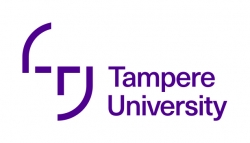 Jukka Koskinen
Jukka KoskinenDoctoral researcher
Tampere University
Finland
Lignin has the potential to act as a reinforcing filler in rubbers and replace carbon black and silica as a sustainable alternative. Typically, the poor dispersion of lignin has hindered the reinforcing properties, however, the results from the latest studies show that the dispersion can be improved with optimal mixing parameters and by choosing the correct silanes. A novel method is used to measure and quantitatively analyze the lignin dispersion.
What the audience will learn
- Novel method to measure dispersion
- Optimal mixing parameters for lignin
- Effect of different silanes on lignin dispersion
- Lignin as a sustainable filler
- Dispersion analysis
14:25
Development of extreme-low rolling resistance tire and LCA
 Haejin Lim
Haejin LimResearch engineer
Hyundai Motor Company
Republic of Korea
At the tire’s point of view for carbon emissions, the effect of the use stage is very significant. When a tire's rolling resistance is reduced, carbon emissions may be reduced by improving energy efficiency in this stage. In this study, an extreme level of low rolling resistance was developed by applying new materials in the tire. The impact of tread compounds and reinforcement components (belt, carcass) was studied through vehicle evaluation. However, the LRR tire had performance trade-offs such as R&H, so further efforts were made to improve it. In conclusion, the carbon reduction effect of the LRR tire was confirmed.
What the audience will learn
- Research on the impact of new materials and tire design through vehicle evaluation with Kumho Tire Co.
- While RRc was greatly improved by applying LRR compounds and lightweight designs to the tire, a trade-off in performance occurred
- The application of new reinforcement components increased the rigidity of the tire and improved flat-spots
- The tire's high-grip tread and reinforced design have improved both low rolling resistance and R&H performance
- Reduced carbon emissions of tires were demonstrated in the use stage
14:50
EV tire compounding challenges and approaches
 Dr Vikram Singh
Dr Vikram SinghGlobal lead - reinforcing materials
Apollo Tyres Global R&D BV
Netherlands
Electrification in the passenger vehicle (PV) is increasing. The CV segment is expected to follow in the footsteps of PV. The conventional requirement of rolling resistance, traction and mileage for an IC engine vehicle is no longer good enough to meet the performance requirements of an EV. Though not exclusively mentioned, low noise and high cut and tear resistance became essential requirements of EV tires due to the combined effect of low hysteretic tread compound and tires designed for high traction. In this current work, the compounding challenges and approaches to tackle the expanded and conflicting performance requirements will be discussed to achieve the optimized set of tire compound properties.
What the audience will learn
- Performance comparisons and requirements of an EV tyre in comparison to ICE tyre for passenger as well as commercial vehicle segment.
- Compounding challenges to meet the conflicting performance requirements.
- Compounding approaches to achieve the optimized set of tyre properties.
15:15 - 15:35
Break
Moderator
 Prof Anke Blume
Prof Anke BlumeHead of elastomer technology and engineering
University of Twente
Netherlands
15:35
Total solutions for new-generation synthetic rubbers for EV tires
 Itsun Lee
Itsun LeeSenior chemist
TSRC Corporation
Taiwan (Province of China)
To meet the growing demand for EVs and sustainable tires, TSRC, a leader in polymer design, is advancing research on high-performance synthetic rubber materials. TSRC's advanced G4 and G5 functionalization technologies, paired with optimized microstructural control in S-SBR and BR (both low- and high-cis contents), enhance filler dispersibility and improve the magic triangle performance by over 20% in high-silica formulations – ideal for EV tires. These comprehensive innovations boost tire performance while reducing carbon emissions, aligning with the sustainable development goals (SDGs).
What the audience will learn
- Overall introduction to TSRC’s comprehensive solutions for EV tires
- Superior silica-dispersing rubber materials
- Material solutions for higher wear resistance
- Material solutions for lower rolling resistance
- Case studies on optimized tire performance with a combination of novel materials
16:00
Optimization of reversible sulfur cross-linked natural rubber elastomers for recycling
 Dr Thomas Griggs
Dr Thomas GriggsPostdoctoral research assistant
Queen Mary University of London
UK
Natural rubber is typically cross-linked using sulfur or peroxide which inherently limits its recyclability. Minimizing the loss in performance after recycling is essential to achieve a circular economy within tires. Through semi-efficient or conventional sulfur curing systems, disulfide bonds occur amongst the cross-links. These disulfide bonds can be exploited to promote recyclability through a dynamically reversible cross-link. In this work, a range of chemistries are examined to enhance the recyclability of natural rubber compounds. Disulfide metathesis inhibitors are explored together with their potential synergistic effects. Mechanical characterization of both virgin and recyclable compounds is carried out, demonstrating the compounds' recyclability.
What the audience will learn
- How naturally occurring disulfide within cross-linked natural rubber can be exploited for recyclability
- What disulfide metathesis inhibitors can be used and how effectively they can promote improved recyclability
- How effectively recyclable natural rubber can be introduced into currently used stock
- What methods can be used to understand how effectively materials with labile cross-links are recycled
- How the presence of fillers impacts the effectiveness of the disulfide metathesis inhibitors
16:25
Exploring bio-based resins as sustainable plasticizers in tire tread compounds
 Dr Javier Alejandro Araujo Morera
Dr Javier Alejandro Araujo MoreraPostdoctoral researcher/manager
University of Twente/Elastomer Competence Centre
Netherlands
The automotive industry is in constant development, with a special focus on increasing the sustainability of tires while maintaining their performance. One of the most used approaches to reach this goal is the use of bio-based raw materials. This study explores replacing traditional plasticizers in tire tread compounds with bio-based resins to improve sustainability. Four bio-based resins were tested in a silica-filled SBR/BR compound, showing similar or improved mechanical properties, higher cross-link density, better dispersion and enhanced wet grip, but a slightly reduced abrasion resistance and increase in the rolling resistance compared to a TDAE-based compound.
What the audience will learn
- The overall performance of silica-filled SBR/BR tire tread compound using bio-based resins over non-renewable plasticizers
- How bio-based resins influence the curing behavior of the rubber compound
- How bio-based resins influence the dispersion of silica particles in the rubber compound
- The role of the softening point of bio-based resins on tire tread compound properties
- The effect of bio-based resins
Day 1: Tuesday, March 4
Five Continents
Outlook, challenges and issues for the global tire business
10:45 - 12:25
Moderator
 David Shaw
David ShawCEO
Tire Industry Research
UK
10:45
Ongoing transformation of the global tire industry
 David Shaw
David ShawCEO
Tire Industry Research
UK
This paper tracks changes across the world’s tire industry, and projects to the future. For the big brands, changes include reviews of corporate strategies, digitization and moving to mobility service providers – and slowly withdrawing from car tires under 17 inches. In China, it has meant consolidation of smaller tire makers and international expansion and greater professionalism for the bigger ones. Everywhere, it means focusing on sustainability, digitization and developing new skills within the workforce. For the future, it means more flexibility; more collaboration and yet more focus on sustainability.
What the audience will learn
- How the global tire industry is changing
- Strategies for premium brands
- Stragies for brands that are expanding
- Transfer of manufacturing capacity between big berands and smaller companies
- Summary of global investments
11:10
Wet braking of worn tires: real-world assessment of regulatory requirements
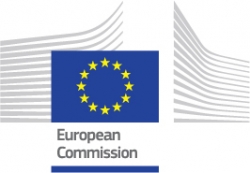 Dalia Broggi
Dalia BroggiProject manager - scientific research
European Commission
Italy
 Dr Andrea Genovese
Dr Andrea GenoveseAssistant professor
Università degli Studi di Napoli Federico II
Italy
The new regulatory requirements on wet grip of worn tires aim to ensure that tire performance is assessed at their end of life, i.e. when worn, ensuring tires meet requirements throughout their life and are not replaced prematurely. Wet braking, a critical performance affecting road safety, dramatically deteriorates in worn tires. For practical reasons, the current regulation sets criteria on buffed tires (new tires with artificially reduced tread depth); however, naturally worn tires may perform differently due to several other factors. This joint study between JRC and UNINA investigates performance discrepancies.
What the audience will learn
- Wet braking performance requirements
- Regulatory developments
- Factors affecting braking on wet surfaces
- Buffed tires versus naturally worn tires
- Regression model
11:35
What's happening in the tire industry?
 Robert Simmons
Robert SimmonsManaging director, tires
GlobalData
UK
With consumer incomes under pressure from high inflation and interest rates, budget replacement tire sales have increased at the expense of high-cost tires. This has led to an increase in imports of low-cost tires (primarily from China and ASEAN) and placed pressure on tire production in high-cost markets. The paper will examine these trends, look at the markets for both OE and replacement tires and present an outlook for the industry.
What the audience will learn
- Recent trends in the tire trade and the growth of low-cost exports
- The effect of this on tire production in high-cost markets (Europe and US)
- Outlook for vehicle sales and OE tire production
- The growth of the vehicle parc (vehicles-on the road) and replacement tire sales
- Investment in new capacity, where is it happening?
12:00
Sustainability options in reinforcing fillers
President
Notch Consulting, Inc.
USA
The presentation will focus on the current demand and future prospects for carbon black and silica, including conventional material as well as sustainable alternatives (recovered carbon black and silica produced from rice husk ash).
What the audience will learn
- Current demand for carbon black and recovered carbon black
- Current demand for precipitated silica, including RHA-based silica
- Factors affecting demand for reinforcing fillers
- New investment in tire production capacity
12:25 - 13:35
Lunch
Day 1: Tuesday, March 4
Five Continents
Tire-related data – ideas and initiatives
13:35 - 17:15
Moderator
 Riccardo Giovannotti
Riccardo GiovannottiSecretary general
GDSO
Belgium
13:35
Cradle to grave use cases supported by data sharing
 Riccardo Giovannotti
Riccardo GiovannottiSecretary general
GDSO
Belgium
Beyond regulatory challenges, the forthcoming technical requirements for cradle to grave use cases can represent an opportunity for tire manufacturers to develop new services while providing new solutions leveraging on data. However data sharing is not a given and this is where the tire industry can make a difference by letting the manufacturers join the efforts through GDSO, focusing on data standardization and a new data space deployment along the tire's life and across different stakeholders. Through this presentation, GDSO will introduce the Tyre Lifecycle Data Service (TLDS), the new connector that pushes forward the tire industry maturity level and readiness on data sharing, with unprecedented experiences in any other industry or any other good. Don't miss this opportunity to discover more about the TLDS and to get in contact with GDSO Secretary General.
What the audience will learn
- Challenging framework with regard to data sharing for cradle-to-grave use cases
- TLDS introduction, focusing on the Governance, stakeholders’ roles, users stories and data under the spotlight
- TLDS Minimum Viable Product demonstration and expected go-live timeline
14:00
Road perception technology for ADAS and autonomous vehicle applications
 Kanwar Bharat Singh
Kanwar Bharat SinghProgram manager, algorithms and software engineering
The Goodyear Tire & Rubber Company
USA
This presentation highlights the latest advancements in Goodyear's SightLine technology, enabling real-time assessment of road conditions and peak tire grip potential. Leveraging a fusion approach that combines vehicle dynamics estimation, machine learning modeling and camera-based data, the technology delivers highly accurate insights. Additionally, the session will introduce a cutting-edge direct sensing solution utilizing optical sensors, designed specifically for high-fidelity automated driving applications.
What the audience will learn
- Challenges in road condition monitoring for ADAS and autonomous vehicles
- Goodyear SightLine’s innovative approach to addressing these challenges
- Practical use cases for ADAS and automated driving applications
14:25
Shaping the tire digital soul
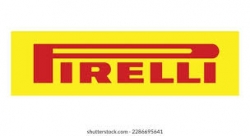 Marco Rocca
Marco RoccaHead of product management
Pirelli
Italy
After many years of incubation, tire-mounted sensor system solutions have become a market reality, rapidly increasing in volumes and applications on a yearly basis. Through appropriate digital signal processing, tire sensor data enables a broad variety of use cases in different mobility segments, opening new technological and business opportunities. This market path is accelerated by the availability in vehicles of powerful electronic systems, allowing fast integration of the technology and bringing evident benefits on safety, user experience, maintenance and sustainability. The presentation highlights opportunities and challenges, together with some application examples.
What the audience will learn
- Market and technology update on TMS solutions
- Some application examples of functions that can be implemented through TMS technology
- Use cases for OE applications, targeting safety, performance and user experience
- Possible technology evolutions
14:50
Distributed data platform for optimizing tire lifecycles and As-a-Service models
 Dr Daniel Gainza
Dr Daniel GainzaCEO
Gainza Srl
Italy
The focus of this presentation is on unlocking value in industrial tires and beyond: the power of digital transformation. As-a-Service models dominate the industrial tire sector, driving value for all stakeholders and promoting sustainability. However, their complexity has limited adoption beyond large fleets, leaving consumer markets untapped. Despite efforts in connectivity, the lack of digital, data-driven solutions and opaque product lifecycles hinder expansion. This presentation will unveil a distributed data sharing platform that enables seamless, secure access to tire lifecycle data, from manufacturing to servicing. This innovation simplifies management, reduces costs and opens new opportunities for external financing – empowering all players in the value chain to thrive.
What the audience will learn
- Unlocking new markets: how digital solutions can help extend As-a-Service models to smaller operators and consumers, increasing market reach
- Streamline lifecycle management: collaboration and transparency must be increased across the tire lifecycle with a secure, distributed data sharing solution
- Enhance sustainability opportunities: leverage lifecycle data to provide governed access to external financing, optimized resource allocation and value retrieval
15:15 - 15:35
Break
15:35
Scaling tire identification: durable, efficient RFID solutions
 Jonas Dispersyn
Jonas DispersynInnovation platform leader
NV Bekaert
Belgium
In the evolving landscape of tire manufacturing, RFID technology is emerging as a crucial tool to meet regulatory demands like the Digital Product Passport (DPP), as well as market needs for circularity and asset management. Bekaert is developing an innovative RFID solution using a metal fiber antenna seamlessly integrated into the tire. This design offers cost-efficiency, durability and extended reading distance, addressing the limitations of current solutions. Bekaert's breakthrough enables scalability for mass adoption, especially in basic tire segments, unlocking new business models while supporting tire lifecycle management, smart mobility and sustainability initiatives across the industry.
What the audience will learn
- The future potential of RFID technology in supporting tire lifecycle management and sustainability
- How RFID technology can be a key enabler for circular economy and digital product passports
- The design of durable RFID antennas for optimal performance in harsh tire environments
- Ways to reduce the total cost of ownership (TCO) for RFID in mass-market tire segments
- How integrated RFID solutions improve asset management and fleet services
16:00
Big data analysis in the context of smart tire development
 Dan Andrei Anton
Dan Andrei AntonFounder and managing director
Autoadmin Consulting / Unleashed Engineering
Romania
In the last decade, we have witnessed a clear trend of shifting from ICE vehicles to EVs, forcing the tire industry to accelerate innovation, develop better tires and consider new means of tracking a tire's performance throughout its lifetime. As new sensing technology is added to tires, engineering teams must now deal with more data to analyze, especially signals from various sensors. This presentation aims to introduce a few concepts related to how engineers can use FEA data for product performance and algorithm development at the same time.
What the audience will learn
- Smart tire FEA model creation techniques that are fit for the purpose
- Pre-processing versus post-processing data and how to manage it
- Improved workflows for tire system modeling
- Automations for sensor signals extraction from complex FEA models
- Innovative means of storing and using results data
16:25
Exploring the future of TPMS: advancing tire safety and efficiency
 Jörg Sturmhoebel
Jörg SturmhoebelProduct manager embedded products
Nira Dynamics
Sweden
Low tire pressure is a common problem that can lead to costly consequences, such as reduced fuel efficiency, uneven tire wear and even accidents. Two leading solutions, one hardware-based (dTPMS) and one software-based (iTPMS) are dominating the market. While dTPMS uses sensors in each tire, iTPMS leverages existing vehicle sensors, offering a cost-effective, eco-friendly alternative. The latest iTPMS advancements provide detailed insights into tire pressure and alert drivers to the severity of pressure loss. Attendees will learn about iTPMS features like Critical Puncture Warning, Easy Reset and Percentage Display, and how these innovations can provide manufacturers with a competitive edge.
What the audience will learn
- How has software based TPMS (iTPMS) caught up with hardware based solutions?
- How is next-generation iTPMS improving fuel economy, reducing tire wear and increasing safety?
- How does software enhance the driver experience, minimizing tire-related concerns?
- What are the competitive advantages for a car manufacturer to use indirect TPMS?
- What are the challenges when implementing a new TPMS strategy?
16:50
What are the key learnings and benefits from RFID projects?
 Lauri Hyytinen
Lauri HyytinenAutomotive MDM
Avery Dennison Smartrac
Finland
Tire marking with embedded RFID tire tags is moving from small projects into high-volume applications. The presentation will share the key learnings from the running applications and the benefits recognized by tire manufacturers. It will go through the typical questions from tire manufacturers and industrial solution providers.
What the audience will learn
- The key benefits tire manufacturers have recognized when they have started to implement embedded RFID transponders
- The key topics to take into consideration while planning RFID implementation
- What tire manufacturers have learned from their first RFID use cases
- The biggest challenges tire manufacturers have faced with RFID applications
- How the tire industry is moving forward with RFID implementation
Day 1: Tuesday, March 4
Casablanca
Modeling, simulation, testing and analysis
10:45 - 12:25
Moderator
Vehicle dynamics researcher and company CEO
UniNa/MegaRide
Italy
10:45
Advances in regulatory tire abrasion testing with the vehicle method
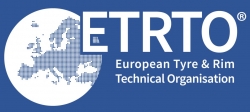 Frederic Biesse
Frederic BiesseSenior fellow for tire physics and modelization
ETRTO
France
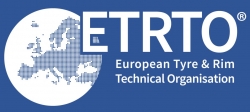 Dr Benjamin Oelze
Dr Benjamin OelzeDepartment manager
ETRTO
Germany
ETRTO has been working since 2018 on the design of a vehicle-based tire abrasion rate index test method for consumer tires as a contribution to the regulatory evolution under the framework of a task force at the United Nations WP.29. After improvements introduced in 2023, a second test campaign was performed. In addition, the measurement of 180 tires selected to obtain a state of the art of the UN consumer tires market gives a statistical view of abrasion performance. The development of abrasion index test methods for van and heavy-duty truck tires is also in progress. These developments and results are presented.
What the audience will learn
- The main principle of the on-vehicle tire abrasion testing method, with its improvements
- The results of the abrasion method based on the latest 2024 testing results
- The principles used to select 180 customer tires from the UN market assessment, and the statistical results
- The progress of the tire abrasion method development for van tires (light commercial vehicles tires)
- The progress of the tire abrasion method development for heavy-duty truck tires
11:10
Rebound DMA – revisiting rebound resilience according to Schob
 Prof Jorge Lacayo-Pineda
Prof Jorge Lacayo-PinedaHead of expert field for materials evaluation
Continental Tires
Germany
Rebound resilience according to Schob is a widely used test method to measure hysteretic losses in rubber samples. Its success story is related not only to the simplicity of the experiment but also to the characteristic contact times and the type of deformation similar to that observed in tire-road contact. The highly dynamic rebound impact contains valuable information accessible by analysis of the time derivatives of the deformation as a function of time. A new type of rebound tester is proposed here that can perform a dynamic mechanical analysis of the impact within a few milliseconds.
What the audience will learn
- The basics of rebound resilience
- Understanding energy dissipation during an impact
- How to visualize the hysteretic losses within milliseconds
- How to visualize adhesion within milliseconds
- A new type of rebound tester
11:35
Sumitomo Rubber's advanced simulation technologies for tire aerodynamics and noise
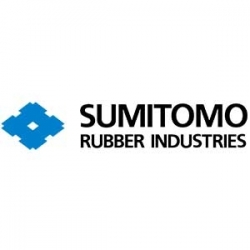 Ryota Tamada
Ryota TamadaManager
Sumitomo Rubber Industries, Ltd
Japan
As the transition to electric vehicles progresses, the absence of traditional engines increases the impact of tire-induced air resistance and noise. To address this, Sumitomo has developed simulations to predict the aerodynamic and noise properties of tires. For aerodynamics, the company has created a simulation that considers the tire patterns and rolling states to reduce drag. For noise, it has developed a method that combines tire and vehicle vibrations to predict and improve noise performance. These advanced simulation techniques support the spread of electric vehicles and their model-based development.
What the audience will learn
- Simulation technologies to predict tire aerodynamics and noise performance
- Aerodynamic simulation considering tire patterns and rolling states
- Aerodynamic simulation using vehicle data to calculate tire aerodynamics
- Noise prediction methods combining tire and vehicle vibrations
- Noise prediction methods using frequency-based substructuring (FBS)
12:00
Michelin's innovative modeling bricks for efficient virtual design of vehicles, leveraging tire datasets
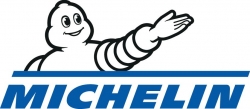 Frederic Leymin
Frederic LeyminSimulation marketing and sales
Michelin
France
With its expertise in simulation, Michelin has solutions covering the virtual design V-cycle. While maturing processes, the team realized the gap of having a wide package of available virtual components, tires and beyond tires. To overcome these limitations, Michelin has developed an innovative method to provide a great number of qualitative tire datasets, combining physically measured data with physics-based functional models. This allows the creation of tire digital twins on the full usage perimeter, including extreme conditions (e.g. extreme slip angles), aligned with reality. The tire and vehicle datasets are adapted to popular simulation formats, bringing new experience to the virtual design.
What the audience will learn
- What a vehicle development cycle looks like today, with which available virtual tools, and where it brings efficiency
- What are the blocking points for a seamless global virtual design approach?
- How is it possible to overcome those limitations, with both new technical and process/data access ways of working?
12:25 - 14:00
Lunch
Day 1: Tuesday, March 4
Casablanca
Reinforcement – innovations and initiatives in development, test, production and sustainability
14:00 - 17:15
Moderator
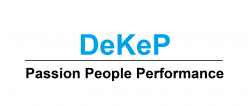 Patrick De Keyzer
Patrick De KeyzerConsultant
DeKeP
Belgium
14:00
Cokoon: an open-source, resorcinol-formaldehyde-free bonding system for textile reinforcements
 Dr Cornelia Schmaunz-Hirsch
Dr Cornelia Schmaunz-HirschSenior reinforcement developer
Continental Tires
Germany
 Dr Mustafa Yasin Sen
Dr Mustafa Yasin SenExpert researcher
Kordsa Teknik Tekstil AS
Türkiye
Continental and Kordsa, a global reinforcing materials supplier primarily to the tire industry, have jointly developed a resorcinol-formaldehyde-free dip technology for bonding textile reinforcements to rubber-based compounds. Given the key applications in the tire industry, the transition to this new adhesive technology presents a significant challenge. To address this, both companies have adopted a free licensing model for the bonding system, promoting an open-source approach. Continental continuously analyzes and reviews the raw materials used in the production of its tires. With Cokoon, the company has succeeded in replacing resorcinol and formaldehyde in the production of tire fabrics.
What the audience will learn
- Why a multisource approach is beneficial for an alternative dip technology in the tire industry
- How a company can access Cokoon's open source solution
- The current status and future plans for Continental and Kordsa's Cokoon dip technology
14:25
Recycled steel reinforcement at Michelin
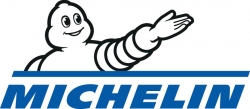 Dr Sebastien Hollinger
Dr Sebastien HollingerSenior fellow, metallic composites
Michelin North America Inc.
USA
Michelin is renewing its ambition to use renewable and recycled materials, reduce CO2 emissions and recycle its product to all the raw materials used in tires. For its steel cord and bead wire, Michelin is converting its raw material supply to steel made on an electric arc furnace with a high percentage of scrap feedstock. To overcome the technical and supply challenges related to this feedstock and increase the recycling of end-of-life tires, Michelin is developing a closed-loop approach for the steel for tire reinforcement. Michelin will present some promising results and perspectives about this approach.
What the audience will learn
- The current situation: use of recycled steel in steel tire cords (market key data, roadblocks, etc)
- The current situation: recyling or use of steel coming from end-of-life tires
- Michelin's ambitions and targets for recycled material and the recyling of tires with a focus on steel
- Michelin's recent technical results about closed-loop trials for steel in tires
- Michelin's perspectives and needs about future tire steel closed-loop testing and implementation
14:50
Future-ready strength for next-gen tires
 Yiwen Luo
Yiwen LuoHead of BARDEC (Bekaert Asia R&D Center)
NV Bekaert
China
In an increasingly competitive tire industry, R&D faces the ever-greater challenge to develop more fuel-efficient and sustainable tires that support the future of mobility. This demands purpose-driven innovation that anticipates future needs, with tire reinforcement being a key component. Bekaert’s Mega Tensile (MT) technology is the result of innovation for both performance and sustainability, driven by the company's purpose to establish the new possible. The higher-strength technology significantly reduces tire rolling resistance through thinner steel cords, and as a result, less steel and rubber are required in tire manufacturing. This responds to environmental goals of dematerialization, improved fuel efficiency and carbon footprint, as well as better EV range. Bekaert offers a perspective on next-gen tire reinforcement to develop the (next) best tire yet.
What the audience will learn
- How Mega Tensile technology reduces tire rolling resistance to improve fuel efficiency
- The sustainability and total cost of ownership benefits of thinner steel cords and plies
- Exploring the trade-offs between material efficiency and tire performance
- Future opportunities for integrating MT with other tire innovations
15:15 - 15:35
Break
15:35
Accelerating sustainable solutions for tires: sustainable reinforcement solutions of NY66 and PET
 Seda Araci
Seda AraciR&D technology manager, tire cord fabric
Kordsa
Türkiye
 Begüm Aytuğar
Begüm AytuğarMarketing manager
Kordsa
Türkiye
This presentation will focus on advancements in sustainable reinforcement solutions for the tire industry. It will highlight how Kordsa has developed various generations of polyester (PET) products, including ultra-high tensile polyester yarns, using recycled PET (rPET) fibers. It will also compare the mechanical properties of rPET and virgin PET, showcasing the performance and maturity of these materials for tire cord applications. Through these comparisons, it will demonstrate Kordsa’s ability to meet both performance and sustainability goals. By presenting the development stages and performance of sustainable reinforcement materials, Kordsa aims to provide valuable knowledge for industry professionals seeking to enhance tire reinforcement applications with innovative and eco-conscious solutions.
What the audience will learn
- Maturity levels of sustainable PET and NY66 reinforcement materials
- Insights on available recycled technology performances in tire cord applications (recycled PET, recycled ultra-high-tenacity polyester, sustainable Ny materials)
16:00
Twaron carcass technology: driving tire efficiency forward
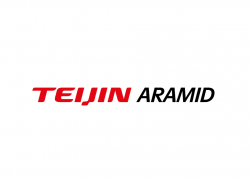 Dr Marc-Jan De Haas
Dr Marc-Jan De HaasTechnology and application manager automotive
Teijin Aramid BV
Netherlands
The presentation will showcase the high-performance properties of Twaron in tire carcass reinforcement. It will provide insights into the tire cord design aspects for achieving optimal fatigue performance. It will be demonstrated that the choice of twist factor significantly impacts strength, modulus and fatigue behavior. This efficient load carrying capacity opens new opportunities for Twaron in SUV and EV tire design. Additionally, the high-performance fiber Twaron enables weight reduction compared to conventional carcass concepts, offering benefits in terms of CO2 footprint reduction during both the raw material phase and use phase of the tire.
What the audience will learn
- Twaron para-aramid yarn
- Benefits of Twaron in the tire carcass
- The role of proper tire cord design in reaching desired performance
- New opportunities in SUV and EV tire carcass applications
- Insights into Teijin Aramid’s customer benefit model
16:25
New-generation single-axis high cycle fatigue testing on simultaneously high load-stroke-speed
 Philippe van Bogaert
Philippe van BogaertCEO
Bogimac Material Fatigue Testing Equipment
Belgium
Single-axis reciprocating fatigue testing of flexible materials is mostly driven by medium electronics or heavy hydraulics. Combining this with load-stroke-speed is easy, but limited by actuator power. A natural-frequency low-power system obtains nearly lossless cyclic energy conversion for the highest efficiency. But easy configuration, startup run at low speed, or adaptive speed control are problematic. Bogimac presents an innovative LHC concept combining high overall performance, long sample length, adaptive control and eco-friendly operation. A paradigm change in clamp design achieves grip at low inertia. The Bogimac LHC-24k8 runs to a combined 30Hz 24800N 20mm-stroke on wire rod, wire, OTR cord, reinforced belt and rope.
What the audience will learn
- Fatigue testing of tire and rubber reinforcement materials
- Application field of pull-pull fatigue testing
- Effect of energy savings on TCO
- Sample clamping design rules
16:50
Innovative rubberized fabric and steel cord calender line collection area
 Marco Putignano
Marco PutignanoProcess officer/R&D
Comerio Ercole
Italy
Improvements in textile and steel cord calender line efficiency push Comerio Ercole to constant innovation. Rubberized product quality is increased by reducing the distance between calender and winder, thereby reducing the exposure to the air and minimizing waste during production changes. The innovation developed by Comerio Ercole refers to a brand-new patented cross-cutting unit linked to a new automatic wind-up equipped with AGV/RGV handling systems. The operations are completely automatic to prevent waste of time due to human errors, increasing productivity, quality and safety.
What the audience will learn
- Recent developments for a brand-new cross-cutting unit and wind-up (collection area)
- Complete automatic cycle thanks to AGV/RGV systems
- Main characteristics of the units, replacing the standard equipment
- Productivity, quality and safety increase thanks to this innovation
- Process cost saving and scrap reduction
Day 2: Wednesday, March 5
New York 1
Sustainability and the circular economy in the tire industry - Day 2
09:00 - 15:15
Moderator
 Stephan Rau
Stephan RauTechnical director
wdk – Wirtschaftsverband der deutschen Kautschukindustrie eV
Germany
09:00
rCB volume update and its suitability for tire manufacturers
 Yogesh Gaikwad
Yogesh GaikwadTechnical consultant for carbon black
Weibold Consulting
Austria
The tire pyrolysis industry has been gaining a lot of momentum. There are confirmed projects in Europe which will see increases in recovered Carbon Black supplies from 62,400 to 693,900 tons within this decade. The presentation will give an update about the serious projects/volumes/timelines on the one hand, and an overview of the progress and success the rCB manufacturers have with supplying rCB to the tire industry and related industries. It will also discuss barriers of entry (looked at from both sides: from the tire manufacturer's and from the rCB manufacturer's point of view).
What the audience will learn
- The tire pyrolysis industry is rapidly growing, with confirmed projects in Europe set to increase recovered Carbon Black (rCB) supplies from 62,400 to 693,900 tons within this decade.
- Updates will be provided on key projects, including volumes and timelines, showcasing the industry's progress.
- An overview will be given on the success of rCB manufacturers in supplying recovered Carbon Black to the tire and related industries.
- Barriers to entry will be explored from both the tire manufacturer’s and the rCB manufacturer’s perspectives.
- The presentation will highlight the challenges and opportunities within the tire pyrolysis industry. I hope this helps
09:25
Michelin motorsport: a more sustainable tire with 71% renewables
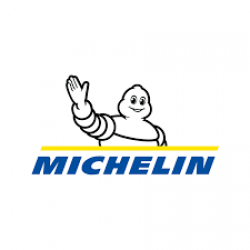 Romain Bricaud
Romain BricaudMotorsport tire design engineer
Michelin
France
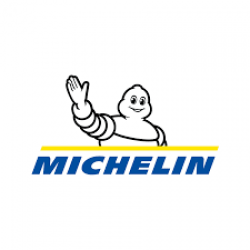 Pierre Tregouet
Pierre TregouetTechnical leader for material design, motorsport
Michelin
France
Michelin believes that tomorrow everything will be sustainable. To achieve this, Michelin's research centers are focusing on key levers to significantly reduce the environmental impact of tires. The introduction of renewable or recycled material in tire design – without compromising performance – is part of this exciting challenge. The new raw materials require intensive research to understand their behavior and how they can be used efficiently. And what could be better than a few laps on track to demonstrate how they perform? Michelin proposes to share the latest version of its sustainable demonstrator tire.
What the audience will learn
- Sustainability is compatible with motorsport activity
- Motorsport is an amazing laboratory for Michelin
- Renewable or recycled materials are now used in Michelin's motorsport tires with a high level of performance
- Integrating these new raw materials is not easy!
09:50
Sustainmax – agri tire with more than 80% sustainable material
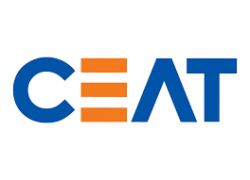 Vivek Purohit
Vivek PurohitGeneral manager, R&D
CEAT Limited
India
'Sustainmax' is a high-end VF tire with 81.0% sustainable material, designed by CEAT, keeping VF tire properties like soil compaction, fuel efficiency, tear resistance and load carrying capacity intact. The Sustainmax tire has been designed with renewable bio-sourced raw materials such as natural rubber, rice husk silica [RHS] and bio-based resin, as well as recycled material such as recovered carbon black, reclaimed rubber and polyester from scrapped PET bottles. It is designed to deliver the same load carrying capability as a regular VF tire. Additionally, the tire footprint is similar to the CEAT regular VF tire, which ensures a low level of soil compaction.
What the audience will learn
- Overview of sustainable materials for tire manufacturing
- Sustainable material that can be used in agri tires
- Workable compounding solution with a significantly high sustainable percentage
- Challenges and learning for making agri tire with highest-possible silica content
- Field performance of Agri tire with more than 80% sustainable material content
10:15
ZIM network: new uses for rubber powder from used tires
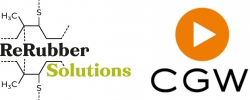 Anna-Maria Guth
Anna-Maria GuthCEO
CGW GmbH
Germany
The newly founded ZIM rubber powder network has set itself the goal of developing new ways of using rubber granulate. The association of medium-sized companies in Germany, as well as several universities, is funded by the state to initiate research and development projects that significantly change the recycling of used tires. The presentation will introduce the network to those present, reporting on research approaches and the current state of affairs.
What the audience will learn
- Goals and visions of the network
- Current research and development approaches of the network
- Potential for using rubber granulate from used tires
- Status of the circular economy for tires
- Rubber asphalt potential in Europe
10:40 - 11:10
Break
11:10
Sustainable tires – a sufficiently clear definition?
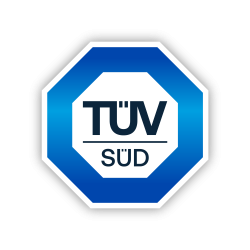 Dr Jonas Johannisson
Dr Jonas JohannissonSustainability program development manager
TÜV Süd Product Service GmbH
Germany
Regulation and supply chain requirements increasingly push sustainability criteria to be fulfilled. This may include circular economy claims such as renewable or recycled content, but also CO2 emissions of upstream supply chains (Scope 3). However, gaps exist in the field of correctly assessing upstream supply chains in order to correctly develop a claim to be associated with the end product. Various methodologies are described in standards, which can be a foundation for calculating claims for the tire material fractions. However, harmonization is lacking. Single manufacturers of tire components are taking the lead in developing their own rules, but acceptance in the overall tire composition is questionable. A further discussion point is the acceptance of mass balancing and the sub-methods in order to simplify chain-of-custody consideration. TÜV Süd gives some insight into the discussion on how green claims about tires can be correctly stated and what developments in standardization and regulation are currently underway.
What the audience will learn
- Understand the basics and challenges coming with Green Claims directive and interlinked regulation
- Get insights into standardisation landscape for tire material claims and status quo of harmonization
- Outlook on the standards projects currently ongoing
11:35
The trade-offs of going green – the impact of extending bio-components in tires
 Dr Tamara Markova
Dr Tamara MarkovaStrategy advisor
Biolanic Sp. z o.o.
Poland
Global ecological trends are requiring that tires and rubber become more sustainable. This reflects not only the transition from mineral-based to bio-based components but also extends to the share of renewable-based components used in tires and rubber. Some monitoring of this trend shows that is it not revolutionary but a gradual evolutionary transition. The reasons for this are the lack of an industry standard for some important renewable components, as well as tire makers' need to keep tire properties at the same or better level. Should tire makers move quicker in this transition or carefully continue, step by step?
What the audience will learn
- Evolutionaty transition
- Improvement of tire wet and grip properties
- Tire rolling resistance improvement
- Carbon footprint decrease
- ISCC certification
12:00
Aiming For industry standardization on carbon black product carbon footprints
 Andre Yvon-Bessette
Andre Yvon-BessetteCorporate product sustainability/LCA manager
Cabot Corporation
USA
To achieve Cabot’s purpose of creating materials that improve daily life and enable a more sustainable future, it continues to drive technology innovations to achieve the 2050 Net Zero Ambition. In addition to Cabot, most tire manufacturers also have ambitious decarbonization goals. With an increasing need for product carbon footprints (PCFs) to inform business decisions, the carbon black industry needs improved transparency and data quality to ensure consistent reporting to downstream industries. This presentation will focus on the challenges and opportunities that the carbon black industry faces when calculating PCFs and the downstream impact on the tire industry.
What the audience will learn
- An update on Cabot’s sustainability journey to achieve Net Zero by 2050
- Current and future state for carbon black product carbon footprints across the industry
- PCF assumptions that can cause significant variations in the results for carbon black
- The importance of carbon black industry alignment on product category rules (PCRs) and the impact on the tire industry
12:25
Sorting for better recycling
 Bertrand Thoumsin
Bertrand ThoumsinSales manager - Europe area
Regom
France
Tire recyclers such as granulators, devulcanizators or pyrolyzers often face a significant challenge related to the consistency of the raw materials (inputs), irrespective of the recycling technology employed. Tire sorting involves the systematic separation, identification and catagorization of used tires into distinct grades. Understanding the composition of your inputs is key to enhancing the overall quality of the final product. Additionally, leveraging appropriate technology allows for more precise control over the entire process. The question arises: how can we revolutionize the sorting and identification process? Moving away from manual sorting toward automated sorting represents a promising solution.
What the audience will learn
- Process: How can we sort 1,200 tires an hour?
- Applications: What do we do with sorted tires?
- Traceability: How can we bring traceability to tire recycling?
- Improving flow quality: How can we improve the quality of output flows?
- HR optimization: How can we address the workforce issue?
12:50 - 14:00
Lunch
Moderator
 Anna-Maria Guth
Anna-Maria GuthCEO
CGW GmbH
Germany
14:00
Michelin presents araminolic resins technology, a safer alternative to RFL bonding systems, available for the tire industry
 Laurent Lemonnier
Laurent LemonnierCEO
Michelin ResiCare
France
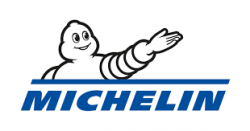 Thierry Egraz
Thierry EgrazResin industrializer
Michelin ResiCare
France
Industrial adhesive resins contain petro-sourced compounds, some of which, classified as SVHC ('substance of very high concern', as defined by the ECHA regulation), require strict precautions to avoid any danger to human health (e.g. formaldehyde, resorcinol, isocyanates).
Michelin ResiCare, a Michelin Group entity, presents araminolic resins innovation, among which is Resi4 TEX, a high-performance resin for textile dipped fabrics in tires, free of formaldehyde and resorcinol. Michelin ResiCare is a business continuity management solution regarding the European directive on the replacement of CMR substances, paving the way for perennial chemistry and safer products for health and the environment.
What the audience will learn
- How the regulatory context is moving us toward RF-free alternatives
- What is araminolic chemistry, a Michelin innovation open to all the tire market?
- How to take part in the journey alongside the industry pioneers
- Why is this technology technically viable and ready to be deployed to create the next generation of fabrics?
14:25
The performance of the bio-based tread enhancement additives in PCR
 Jochem Vervelde
Jochem VerveldeScientist
Kraton Pine Chemical
Netherlands
The tire industry has the ongoing challenge of meeting high-performance requirements while achieving sustainability targets. Tread enhancement additive (TEA) technology from Kraton offers solutions to this complex issue. Kraton invites you to gain insights into optimizing formulations for target performance through the latest advancements in sustainable TEA across various tire tread formulations.
What the audience will learn
- How to use TEA to achieve the performance of next-generation tires
- What effect formulation changes have on the desired performance
- How to formulate to achieve next-level performance
- How to achieve the optimal compound matrix
- What Kraton products can offer in flexibility to compounders
14:50
Solvay Silica in non-tread parts of the tire for better performance and CO2 footprint
 Dr Thomas Chaussée
Dr Thomas ChausséeR&I manager and global technical marketing manager
Solvay
France
Solvay Silica continues to offer innovative precipitated silica grades to reduce the environmental impact of the tire during its lifecycle, thanks to new grades improving wear and rolling resistance. Beyond performance, Solvay develops circular and low-CO2 products like its RHA production in Europe by 2025. To go further, Solvay has evaluated compound formulation optimization using specialty silica grades to partially replace carbon black in tread and non-tread applications for PC and truck tires to further reduce the tire CO2 footprint.
What the audience will learn
- Speciality precipitated silica performances in tread and non-tread for PC and truck
- How to go further in tire CO2 footprint reduction thanks to non-tread silica compounds
- Solvay portfolio for performance, circularity and low CO2
15:15 - 15:45
Break
Day 2: Wednesday, March 5
New York 1
Innovations and best practices for advanced manufacturing and inspection - Day 2
15:45 - 17:25
Moderator
 Anna-Maria Guth
Anna-Maria GuthCEO
CGW GmbH
Germany
15:45
Innovative technology promoting the sustainable development of tires
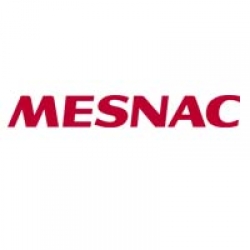 Huili Yang
Huili YangVice president and director of the Research Institute
Mesnac
China
This presentation will discuss how to innovate digital and green technologies, build a low-carbon supply chain and continuously promote sustainable development in the tire industry.
What the audience will learn
- Utilizing intelligent operation and maintenance technology to achieve low failure rate in tire manufacturing and improve the durability and repairability of equipment
- Applying green conveying and energy-saving technology to achieve more energy saving and resource saving in the tire manufacturing process
- Building a digital innovation platform to rapidly upgrade products and promote the sustainable development of tire manufacturing
16:10
Artificial intelligence in tire manufacturing
 Bill Henderson
Bill HendersonHead, USA tire industry
Siemens Industry
USA
In today's evolving manufacturing landscape, artificial intelligence (AI) will transform tire production by capturing and leveraging tribal knowledge from experienced operators. As we move toward more autonomous factories, AI-driven systems are enabling smarter machines to analyze production adjustments and their impacts on product quality. By integrating AI into existing processes, tire manufacturers can replicate successful outcomes globally, ensuring consistent quality. This presentation will explore how AI can capture the expertise of experienced operators, aggregate data for production improvements and present ready-to-implement AI solutions that drive immediate value and innovation in tire manufacturing.
What the audience will learn
- How AI can seamlessly integrate into existing manufacturing systems
- Capturing and utilizing tribal knowledge from expert operators
- Leveraging data to ensure consistent product quality
- Global AI-driven solutions available today for tire manufacturing
- Immediate benefits of AI in enhancing production efficiency and product consistency
16:35
Revolutionizing tire compound manufacturing: how continuous milling delivers competitive advantages
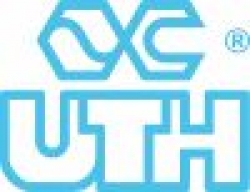 Annemarie Hillebrecht
Annemarie HillebrechtProcess engineer and head of technical center
UTH GmbH
Germany
Continuous milling is an economical and gentle method for processing technical rubber using two-roll plasticizer (TRP) technology. This process combines cracking, homogenizing and discharging in three zones along the continuous roll. The rubber specialized roll design provides the axial material transport under controlled temperature. The reproducible homogeneity of the material is adjusted by different speeds and frictions. The machine allows an automated process and easy maintenance. The benefits include viscosity reduction, a decrease in energy consumption of up to 50% and less floor space demand. Established in tire production, this technology is adaptable for various rubber processing needs and sustainable materials.
What the audience will learn
- How continuous milling contributes to efficient rubber processing for tire production
- How high-quality compounds with consistent material homogeneity can be achieved
- How this process can achieve energy and space savings
- How continuous milling ensures automated easy maintenance
- Where this solution can be applied
17:00
New developments and solutions for silica mixing and beyond
 Dr Lukas Hermeling
Dr Lukas HermelingR&D engineer
Harburg-Freudenberger Maschinenbau GmbH (HF Group)
Germany
New innovations in silica mixing, including the advanced PES7 rotor, are setting new standards in efficiency and durability. The PES7 rotor features optimized geometry for improved material flow, delivering better dispersion, reduced energy consumption, and minimized wear. Tandem mixing further enhances these benefits by combining stages for increased productivity and flexibility in production. These solutions not only ensure high-quality results but also lower operating costs by conserving energy and extending equipment lifespan. From silica mixing to broader applications, these advancements represent a leap forward in sustainable, efficient and cost-effective mixing technology.
What the audience will learn
- Higher silica content and the associated challenges
- Latest developments in the production of silica compounds
- New PES-7 rotor with improved properties for higher throughput
- Production of silica compounds in a tandem mixer
- Tandem mixer for energy and CO2 emissions savings
Day 2: Wednesday, March 5
New York 2
Developments and innovations in materials and related processes - Day 2
09:00 - 17:25
Moderator
 Dr Keizo Akutagawa
Dr Keizo AkutagawaVisiting professor
Queen Mary University of London
UK
09:00
Comparison of different liquid phase mixing approaches
 Mengchen Ba
Mengchen BaR&D department manager
Ecombine Advanced Material Co. Ltd
China
This study conducts a comparative analysis of the performance of three mixing approaches under an identical formulation comprising multiple elastomers: traditional dry mixing (reference), single-step liquid phase mixing (Process A) and multistep liquid phase mixing (Process B). In contrast to traditional dry mixing, the liquid phase mixing compounds exhibit reduced hysteresis; furthermore, regarding tensile strength among the three processes, Process B demonstrates enhancements of 16% and 4% over dry mixing and Process A, respectively. When evaluating elongation at break, Process B shows a 17% improvement relative to the dry mixing process, while remaining comparable to Process A.
What the audience will learn
- Background of LPM technology
- Multistep liquid phase mixing process
- Possible problems in formulations comprising multiple elastomers
- Performance comparison of the three mixing approaches
- Features found in this study of the one-step liquid phase mixing approach
09:25
Higher sustainability in tire: adapting recipes to new raw materials
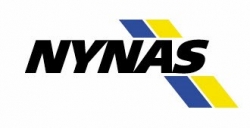 Carlo Silvestri
Carlo SilvestriSenior technical advisor
Nynas AB
Sweden
The tire industry is looking at raw materials with enhanced features to reach sustainability targets: their credentials are rooted in lower product carbon footprint (PCF), biogenic or circular feedstocks. The presentation will focus on a couple of different routes to enhance sustainability in a compound: one to use the same tire oils with a significantly reduced PCF (EVO product) and the other being the introduction of a biogenic oil, Nytex Bio 6200. EVO is a solution without any reformulation or re-approvals and Nytex Bio 6200 offers a 1:1 solution to conventional oils or (with small adjustments in the recipe) further enhances performance.
What the audience will learn
- Non-conventional raw materials
- Product carbon footprint
- Sustainability
- Naphthenic tire oils
- Bio oil
09:50
High-performance sustainable bicycle tire tread compounds
 Dr Nese Kaynak Akkanat
Dr Nese Kaynak AkkanatR&D chemist tire compounds
Specialized International GmbH
Germany
This presentation will explore the integration of sustainability in the development of high-performance bicycle tires. As manufacturers adopt eco-friendly practices, the challenge lies in creating tread compounds using sustainable or recycled materials without compromising performance. Since the tread compound is critical to a tire’s overall performance, balancing rolling resistance, grip and durability across varying temperatures and surfaces becomes crucial. Attendees will gain insights into the latest advancements in sustainable materials for bicycle tires and understand their impact on performance metrics like rolling resistance and grip. Specialized strategies for overcoming performance trade-offs will also be discussed.
What the audience will learn
- Sustainable and recycled material usage for the bicycle tire industry
- Impact of sustainable and recycled materials on bicycle tire performance
- Introduction to Specialized’s new S-Works Facility in Germany: advancing bicycle tire development
- How Nynas Nytex Bio 6200 influences tread compound performance in high-performance bicycle tires
- Bicycle tire tread formulations: integrating silica and carbon black fillers for optimal performance
10:15
Functionalized Li-BR in modern tire recipes: a game-changer for low rolling resistance tires
 Dr Eshwaran Subramani
Dr Eshwaran SubramaniSenior technical service engineer
Asahi Kasei Europe GmbH
Germany
The demand for functionalized Li-BR has surged over the last decade due to its effectiveness in achieving low rolling resistance (RR) in tires. This study highlights the performance enhancements that functionalized Li-BR can provide when paired with functionalized SSBR. Remarkably, even when combined with non-functionalized SSBR, Li-BR demonstrates significant improvements in tire performance compared to conventional high-cis-BR. Additionally, Li-BR promotes easier silica intake, higher silica incorporation and improved mixing efficiency, making it ideal for high-silica recipes. Effective silica dispersion, essential for winter tire traction and stiffness, is greatly supported by Li-BR, underscoring its importance in modern tire formulations.
What the audience will learn
- Learn the benefits of functionalized Li-BR
- Improve the rolling resistance of tire tread
- EV tires or energy effects tires
- Sustainable solutions
10:40 - 11:10
Break
11:10
Effect of multifunction process aids on NR-based silica compounds
 Dr Rohit Ameta
Dr Rohit AmetaHead, R&D
Balkrishna Industries Ltd (BKT)
India
In this research, multifunction process aids in natural rubber-based (NR) silica compounds are studied. NR is a non-polar rubber in nature whereas silica is the polar material. Accordingly, it couldn’t be mixed and dispersed easily in the rubber matrix. To address processing issues, a process aid is required. NR has a tendency toward high reversion during vulcanization over a prolonged time; anti-reversion chemicals are used to protect this high reversion issue. The main function of multifunction process aids is to achieve the properties of process aids and anti-reversion chemicals. Processing behavior, dynamic properties and physical properties have all been studied and are discussed in this paper.
What the audience will learn
- Multifunction process aids
- Reversion
- Physical properties
- Processing behavior
- Dynamic properties
11:35
Dispersion kinetics of carbonaceous materials during elastomer mixing
 Dr Joe Hallett
Dr Joe HallettTechnical lead, Continua
Birla Carbon
UK
Obtaining cost-effective dispersion and distribution of reinforcing particles in elastomers is a prerequisite for compound performance and, often times, a limiting factor in material utility and adoption. In this study a new procedure is developed to track, quantify and discriminate the dispersion and distribution kinetics of reinforcing particulates during mixing with elastomers in a typical internal mixer. The procedure allows for unambiguous discrimination between different types of carbon blacks of various bulk colloidal properties. The procedure can be used to compare various other particulates of interest and differentiate between incorporation kinetics versus particle size effects.
What the audience will learn
- How particulates disperse into rubber during mixing
- How to define and measure the dispersion of particulates in elastomers
- How to track the kinetics of the dispersion and distribution process during mixing
- How different types of carbonaceous materials disperse and how to tune mixing procedures to accommodate them
- Limiting factors in dispersion and therefore performance
12:00
E-curing game-changing innovation with huge CO2 saving impact
 Warren Rudman
Warren RudmanExecutive vice president, curing presses
Harburg-Freudenberger Maschinenbau GmbH
Germany
HF has developed an electrical curing solution. Based on extensive simulations and testing, HF is running extensive trials and working with customers to provide individual solutions depending on customer requirements. The presentation shows the development process and explains the guiding principles that led HF to e-curing. The benefits of electric curing to HF’s customer base are highlighted in terms of energy savings, CO2 emission reduction and the opportunities the new technology offers for tire design and material usage.
What the audience will learn
- Less energy use per tire
- Immense reduction in CO2 emissions, up 100% of the curing shop by using renewable energy
- Temperature and pressure are independently controlled
- Improved tire quality due to more consistent temperature top to bottom
- Extended bladder life
12:25
Making it stick – SVHC-free tackifiers for demanding tack applications
 Dr Nancy Winchester
Dr Nancy WinchesterDirector, R&D, rubber and adhesives additives
SI Group
USA
Widely used phenolic tackifiers are coming under increased regulatory pressure. At the same time, the performance requirements of tires, especially for demanding applications, e.g. electric vehicles, become ever more challenging. Increased silica loadings in advanced tires make rubber-to-rubber bonding more difficult. As a leading supplier to the industry, SI Group has developed both a low residual monomer standard tackifier and an SVHC-free super tackifier, the latter showing optimized performance even in high-silica tread compounds. It also shows excellent tack retention in NR/BR rubber systems. A case study of selected new tackifiers will be presented and their application benefits discussed.
What the audience will learn
- An ultra-low residual monomer standard phenolic tackifier has been developed through process optimization
- The ultra-low residual monomer tackifier is a drop-in replacement for standard phenolic tackifiers
- An SVHC-free tackifier that shows superior performance in silica tread applications will be presented
- The SVHC-free tackifier has been successfully scaled up at SI Group's manufacturing facilities for customer sampling
- Advances in the development and performance of bio-based tackifiers
12:50 - 14:00
Lunch
Moderator
 Prof Ulrich Giese
Prof Ulrich GieseManaging director
Deutsches Institut für Kautschuktechnologie eV (German Institute of Rubber Technology)
Germany
14:00
Functionalized low-Tg S-SBR and BR for high-performance tires
 Dr Sunkeun Kim
Dr Sunkeun KimProfessional
LG Chem
Republic of Korea
The tire industry is increasingly demanding high-performance materials to enhance low wear characteristics, excellent wet grip and low rolling resistance, driven by the need for improved safety and adherence to environmental regulations. LG Chem focuses on developing new functional solution-styrene-butadiene rubber (S-SBR) and butadiene rubber (BR) to achieve superior tire performance. These innovations not only enhance durability and fuel efficiency but also align with the industry's sustainability goals. This research demonstrates the potential of advanced materials for the tire industry to meet both market and environmental demands.
What the audience will learn
- Sustainability
- Structure-property relationships
- Cutting-edge polymerization techniques
- Tire performances
14:25
Sustainable aminic substances in silica-filled compounds
 Dr Cristian Oprisoni
Dr Cristian OprisoniApplication developer
Lanxess
Germany
This presentation introduces a novel aminic accelerator for state-of-the-art passenger car tires based on SBR/BR compounds with high silica content. Typically, aminic accelerators are used to enhance silica dispersion, activate silanization and accelerate sulfur vulcanization. The new substance presented offers improved safety and a more sustainable profile compared to currently used chemicals. It also delivers enhanced silica dispersion and superior dynamic mechanical properties, making it a promising alternative for the tire industry. This innovation aims to contribute to the development of more efficient and environmentally friendly tire manufacturing processes.
What the audience will learn
- Diphenyl guanidine is on the fast track to become a SVHC
- Many alternatives have yet to achieve full property spectrum and also be sustainable
- New compound Rhenocure DR has a safe HSE profile
- New compound Rhenocure DR can be of sustainable origin via mass balance
- Rhenocure DR improves the dynamic mechanical properties of rubber compounds
14:50
Passenger EV tire performance optimization through an integral approach: construction, tread pattern and compound
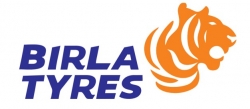 Dr Sarat Ghosh
Dr Sarat GhoshVice president R&D/CTO
Himadri Speciality Chemical Ltd/Birla Tyres (DBRL)
India
Optimization of passenger EV tire performance by connecting three dots: tire construction, tread pattern and compounds. The major challenges are high instant torque, higher weight and longer braking distance. The unique requirements include a stronger carcass, higher durability, low RR, reduced noise and high grip. A reinforced shoulder, multilayer carcass and stiffer sidewall region provide a higher structural strength. High grip and improved aquaplaning, reduced noise and a lower RR are achieved by an asymmetric directional tread pattern, variable pitch with special sipes and a larger footprint with uniform pressure distribution respectively. Blends of natural rubber carbon black and silica silane compounds together with a resin system provide robust, durable, low RR and high grip tread. A resin-reinforced carbon silica sidewall and apex compounds provide a higher stiffness.
What the audience will learn
- Unique properties of NRCB and SSBR silica silane composite combinations for robust low RR tread
- Balancing between wet and dry grip and low RR with a combination of tread pattern and compound
- Wet grip optimization by a resin system combination without sacrificing rolling resistance
- Tread stiffness optimization through pattern design for better traction and handling with low RR and reduced noise
- Higher structural strength and sidewall stiffness for tire longevity and durability
15:15 - 15:45
Break
15:45
The impact of performance resin to improve wet grip for PCR tire tread
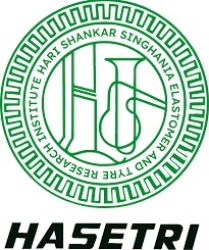 Biswajit Shee
Biswajit SheeSenior manager
HASETRI
India
Recent advances in PCR tire tread compounds have identified performance resins as promising additives to enhance wet grip while maintaining rolling resistance at a comparable level. This study investigates the impact of two resins on the performance characteristics of a radial passenger car tire tread compound, with special emphasis on wet grip and rolling resistance. Two performance resins, differing in aromaticity, molecular weight and softening point, were evaluated in a silica-reinforced PCR tread cap formulation. The compounds were prepared and characterized against a control compound for physical, dynamic, mechanical, wear and fatigue resistance.
What the audience will learn
- A brief introduction and motivation for this study
- Characterisation of Resins
- Design of experimental compounds with different performance resins
- Characterization of developed compounds
- Result and discussion
16:10
Functionality versus molecular weight of SSBR for better performance
 Dr Hanjoung Cho
Dr Hanjoung ChoPrincipal researcher
Kumho Petrochemical Co. Ltd
Republic of Korea
Functional SSBR has excellent properties such as fuel efficiency characteristics and silica dispersion, which is why it has increasingly been used in tire development recently. Among the compounding characteristics, hysteresis energy loss shows good results with high functionality and high molecular weight. To evaluate the contributions of functionality and molecular weight to hysteresis, this study indirectly compared the compounding characteristics between functional SSBR and ultra-high molecular weight SSBR.
What the audience will learn
- Functional SSBR
- Low Tg SSBR
- Ultra-high Mw SSBR
- SSBR
- Compounding properties
16:35
New modified natural rubber for enhanced tire tread performance
 Hai Li
Hai LiR&D director
CheeShine
China
Sustainable alternatives to petroleum-based synthetic rubber are essential for the circular economy and the development of green tires. The presentation will introduce the application of new modified natural rubber as an alternative to SSBR in green tires. The results show that the modified natural rubber tire tread compound has better processing performance and excellent physical and mechanical properties. The special-modification rubber compound has good silica dispersion and lower rolling resistance. The new modified natural rubber has great application potential to replace synthetic rubber in green tire tread compounds.
What the audience will learn
- New modified natural rubber to replace SSBR for enhanced tire tread performance
- The modified natural rubber can replace SSBR with good processability and excellent physical and mechanical properties
- The modified natural rubber can replace SSBR with good silica dispersion and lower rolling resistance
- The new modified natural rubber has great application potential in green tires
- A brief introduction of CheeShine and its innovative R&D
17:00
Balancing in-rubber performance with R&D and pyrolysis process optimization
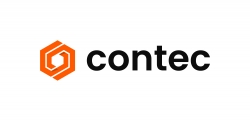 Krzysztof Wróblewski
Krzysztof WróblewskiCEO
Contec SA
Poland
The consistency of recovered carbon black (rCB) is a key challenge for its commercialization in circular applications. Research and development (R&D) plays a vital role in addressing this by refining production processes and analyzing rCB properties. Quality control, particularly in-rubber performance evaluation, is essential for understanding and enhancing rCB quality. This presentation showcases case studies demonstrating how key quality features affect rubber performance stability and how these features can be effectively managed through optimized production processes, ensuring rCB meets market demands with improved and consistent quality.
What the audience will learn
- Case studies showcasing the impact of feedstock, pyrolysis and finishing processes on rCB quality
- Selected applications of rCB in rubber industry
- Research and development as foundations of circularity in tire manufacturing
Day 2: Wednesday, March 5
Five Continents
Analyzing and mitigating TRWP: implications of Euro 7
09:00 - 17:25
Moderator
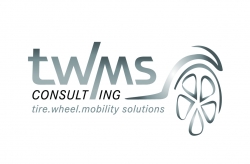 Prof Günter Leister
Prof Günter LeisterCEO
twms-consulting
Germany
09:00
Chemical fingerprint for environmental detection of tire rubber emissions
 Nick Molden
Nick MoldenChief executive officer
Emissions Analytics
UK
Over 2.3 billion tires are produced globally per year, with an ever-increasing complexity of chemical additives to optimize safety and performance. Greater understanding of the chemicals and polymer degradation products allows the environmental impact of tires to be better understood. This presentation shows an untargeted pyrolysis GC-MS method to analyze tire rubber for environmentally important chemicals to develop a comprehensive tire chemical source profile – 340 tires from light, medium and heavy-duty tires from Europe. The tire antioxidant 6PPD is the only chemical detected in every tire, and the presentation will show how a single chemical tracer for tire wear is insufficient.
What the audience will learn
- Detailed organic chemical composition of European tires
- Chemical fingerprint that can be used to measure tire emissions in the environment
- Why a single chemical trace is ineffective for identifying tire emissions
- Comparison of chemical composition between light, medium and heavy-duty tires in Europe
- Understanding degradation products of tire compounds
09:25
Assessing tire abrasion: regulatory requirements and key findings from experimental tests
 Dalia Broggi
Dalia BroggiProject manager - scientific research
European Commission
Italy
Tire wear stems from friction between tires and road surfaces and significantly contributes to environmental pollution. Tire abrasion is a key metric for assessing tire wear and its environmental impact. A recent amendment to UNR117 sets the procedure to evaluate abrasion performance for C1 tires. An extensive market assessment is ongoing to propose abrasion limits for C1 tires. Simultaneously, work on evaluating the method’s suitability for C2 tires has commenced. In this context, the European Commission's Joint Research Centre is conducting independent tests on various C1 and C2 tires. The presentation summarizes some key findings from the JRC testing campaign.
What the audience will learn
- Tyre abrasion metrics
- UNR117 abrasion standards
- Tyre wear market assessment
09:50
Refined characterization of tire road wear particle emissions
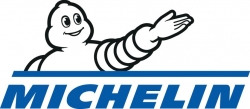 Frederic Biesse
Frederic BiesseSenior fellow for tire physics and modelization
Michelin
France
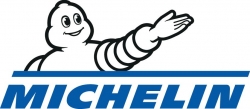 Pierre Schaal
Pierre SchaalCross-functional coordinator, hygiene and environment issues
Michelin
France
Michelin is actively working to reduce the environmental impact of tires. Amongst other important levers like energy efficiency, longevity and quantity of materials used, TRWP is a key lever in order to achieve its goals. Measuring TRWP quantity and size distribution – and particularly the small particles (below 10 µm) – is a technical challenge. The improvement of characterization methods used in Michelin's measurements enables the further refinement of the evaluation of TRWP emissions, reducing the bias faced by many studies. This and other progress will be presented.
What the audience will learn
- Imoprtance of understanding and analysis of TRWP emissions
- Difficulties in capturing and analyzing TRWP
- The experimental on-vehicle setup developed by Michelin to capture real-life TRWP
- The analysis process developed and its latest refinement (2024)
- Results obtained through the updated process
10:15
Characterization of tire road wear particles generated on asphalt pavement
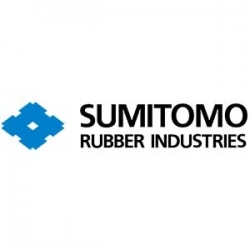 Dr Shinya Nakano
Dr Shinya NakanoManager
Sumitomo Rubber Industries
Japan
This presentation covers the methodology to analyze tire and road wear particles (TRWP) generated on asphalt pavement and show the effect of road conditions on TRWP. Density separation and TGA were performed on TRWP obtained at different temperatures and road roughness levels in order to investigate the ratio of components originating from rubber and road. Particle size distribution was calculated based on optical microscope observation and discussed in terms of road conditions. This research highlights the necessity of addressing both the tire and road surface aspects to tackle the TRWP issue.
What the audience will learn
- How to separate TRWPs from collected wear samples
- How to evaluate the ratio of TRWPs components
- How to calculate size distribution from images obtained by optical microscope
- How the road temperature affects TRWPs component and size distribution
- How the road roughness levels affect TRWPs component and size distribution
10:40 - 11:10
Break
11:10
Evaluation of tire road wear particles under real conditions
 Dr Benjamin Oelze
Dr Benjamin OelzeGroup leader global tire testing (GTT), test method development wear (CC 61202)
Continental Tires
Germany
In the joint research project OLRAP between TU Braunschweig (TUBS) and Continental Reifen Deutschland (Continental), funded by MWK Niedersachsen, a study to measure and analyze tire road wear particles under real conditions was carried out. The overall objective was to develop a process that can quantify tire wear particles under various conditions (like driving style) during their genesis. For this purpose, a test vehicle was equipped with various measuring devices, including for example commercially available particle sensors (PM1/2.5/10/100). Furthermore, tire road wear material was collected for laboratory analysis making use of a marker technology.
What the audience will learn
- How to collect and measure TRWP under real world conditions on a test vehicle
- Correlation of acceleration conditions to particle size distribution
- Particle size fingerprint measurements using PM 1/ 2.5/ 10/ 100 sensors online
11:35
Bridgestone’s efforts for TRWP
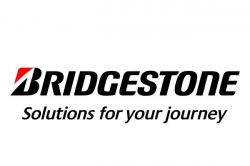 Dr Yasuhiro Shoda
Dr Yasuhiro ShodaMaterial expert
Bridgestone Europe
Italy
Tire and road wear particles (TRWP) are the result of friction between the tire and the road surface, which is essential to secure a safe and comfortable journey. It is a complex issue impacted by many factors, including road conditions, weather, vehicle and tire characteristics and driving behavior. Bridgestone recognizes the need to understand and address TRWP. This presentation reports the method for efficiently collecting TRWP and its characterization.
What the audience will learn
- Bridgestone's stance for TRWP
- Bridgestone's efforts for TRWP
- BS approach for TRWP
- Understanding TRWP
- Addressing TRWP
12:00 - 12:50
Panel Discussion - Euro 7 – implications and challenges for the tire industry
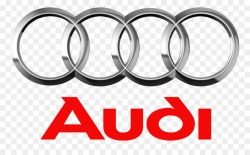 Sebastian Gramstat
Sebastian GramstatSenior expert
Audi
Germany
 Frederic Biesse
Frederic BiesseSenior fellow for tire physics and modelization
Michelin
France
 Prof Thomas Bachmann
Prof Thomas BachmannDirector of automotive engineering group
Technische Universität Ilmenau
Germany
 Malte Wohlfahrt
Malte WohlfahrtGlobal R&D director
Synthos
Germany
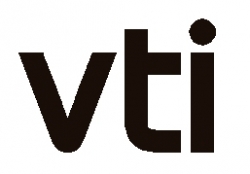 Dr Ulf Sandberg
Dr Ulf SandbergSenior research leader
Swedish National Road and Transport Research Institute (VTI)
Sweden
Guenter Leister, CEO, twms-consulting, Germany
Moderators:
Guenter Leister, CEO, twms-consulting, Germany
Günter Leister, CEO, twms-consulting, Germany
12:50 - 14:00
Lunch
Moderator
 Nick Molden
Nick MoldenChief executive officer
Emissions Analytics
UK
14:00
Tire wear and TRWP experimental techniques
 Stefano Pontoglio
Stefano PontoglioR&D testing engineer
Pirelli Tyre
Italy
 Dr Andrea Ronchi
Dr Andrea RonchiGroup leader R&D material testing innovation
Pirelli Tyre
Italy
The upcoming tire abrasion regulations and the increasingly challenging sustainability goals call for the development of tires with lower environmental impact. Tire wear (TW) optimization is one of the challenges that the tire industry has to face, with increasingly robust methods to evaluate mileage, wear shape and particle emissions. To achieve this goal, reliable laboratory testing methods are essential to predict the wear that can be observed in real-life conditions and ensure the quality and durability of tires. This presentation will focus on today’s development and state-of-the-art experimental techniques used to measure TW and TRWP.
What the audience will learn
- Tire wear measuring techniques
- Tire road wear particles measuring techniques
- Indoor versus outdoor measurements
- Tire testing
- Tire emission regulations
14:25
Tire road wear particles and their collection
Dr Hiroshi Mouri
Rubber consultant
formerly at Bridgestone
Japan
Rubber consultant
formerly at Bridgestone
Japan
The first part of the present paper reviews the fate of tire and road wear particles (TRWP) based on the findings from the study sponsored by the Tire Industry Project (TIP) since 2005. The results have been published in ISO standards. The authors found additional studies conducted during the period, and added a new insight to the fate of TRWP. The second part of the paper discusses a new methodology to collect TRWP in an efficient way to satisfy the need to accelerate scientific understanding of the potential risks associated with TRWP.
What the audience will learn
- Fate of tire wear particles
- Collection of tire debris
- Tire Industry Group
- Airborne particles
- Watershed
14:50
Tire wear and tire road wear particle measurements at inner drum test benches of KIT
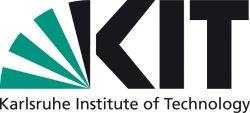 Dr Martin Gießler
Dr Martin GießlerHead of wheel-tire-road research group
Karlsruhe Institute of Technology
Germany
The Institute of Vehicle System Technology at the Karlsruhe Institute of Technology (KIT) analyzes the influences of different load and track conditions on tire road wear particles (TRWP) within an inner drum test rig. Together with Fraunhofer ITWM, KIT is developing a standardizable method for predicting tire wear based on test bench tests and simulations. The presentation will summarize the motivation for tire testing on wear and TRWP. After a brief introduction to the testing facilities with tire wear testing setup, the presentation focuses on KIT's testing methods for TRWP measurements. Some example results on the influence of operation conditions on TRWP will be presented. In addition, an overview of the findings and the current state of the tire wear testing project will be given.
What the audience will learn
- Tire-road-wear tests at an inner drum: test setup including particle collection, test procedure and results with a focus on particle analysis
- RAMUS project: the development of a method as a combination of simulation and tire tests to predict tire wear rate
15:15 - 15:45
Break
15:45
Optimizing indoor tire abrasion tests on sandpaper
 Prof Günter Leister
Prof Günter LeisterCEO
twms-consulting
Germany
Indoor tire wear tests wear out the tire and the drum surface. Tire wear machines often use sandpaper on their drums, which makes the tests less realistic. Sandpaper must be replaced regularly to accurately reproduce abrasion tests. The Euro 7 regulation allows for these tests to be carried out on indoor test benches. This study develops a method based on the ETRTO method that significantly reduces the number of reference tires and total measurement time.
What the audience will learn
- The consequences of Euro 7
- Testing of emission of tire road wear particles
- New, efficient method for indoor wear measurement
- The influence of sandpaper on indoor tire wear testing
- Sandpaper quality estimation
16:10
A novel measurement methodology for robust tire wear particle emissions
Test engineer
DLR
Germany
Developing a standardized and repeatable method for measuring tire road wear particle (TRWP) emissions is challenging due to the many influencing factors. DLR introduces a novel three-step approach: generation, collection and analysis for measuring TRWP emissions, applied in a chassis dyno setup using an innovative housing collection system. This system is designed to reduce the influence of external parameters which directly affect TRWP emission results. By defining accurate boundary conditions for each step, the method provides a robust framework for repeatable and consistent TRWP emissions data, leading to more reliable comparisons between different tires and a trustworthy foundation for component testing.
What the audience will learn
- Influence of collection and sampling systems on TRWP measurements; the importance of geometry, air speed and instrument properties
- Advantages of the novel housing collection system in reducing background particle interference and increasing collection efficiency
- Optimizing particulate matter sampling lines for TRWP measurements by minimizing errors through controlled isokinetic conditions
- Stability and repeatability in TRWP measurements using high-resolution real-time monitoring with several instruments
- Insights from PM10 and PM2.5 emission factors of TRWP across several WLTC cycles
16:35
Tire particulate emissions – an interdisciplinary research challenge
 Dr James Knowles
Dr James KnowlesSenior lecturer in dynamics and control
Loughborough University
UK
Tires are becoming a leading source of particulate matter emissions from modern vehicles, with a significant body of literature devoted to experimental measurements that quantify the scale of emissions from an individual tire level up to city-wide. As the ultimate destination for these emissions is the environment and its inhabitants, this presentation will highlight the need for future tire emissions research to adopt a more interdisciplinary approach than is evidenced in current literature. Alongside researchers in environmental sciences and medicine, the presentation defines future research questions that can help ensure future pollution effects – rather than just emissions – are minimized.
What the audience will learn
- What is currently known about how tire particulates are created and dispersed
- What is currently known about the environmental impacts of tire particulates
- What is currently known about the health impacts of tire particulates
- What knowledge gaps exist around tire particulate creation, dispersion and impact on the environment and human health
- What interdisciplinary work is needed to address these knowledge gaps
17:00
Tire emissions – how brake particles influence the measurements
 Miles Kunze
Miles KunzeResearch assistant
Technical University Ilmenau
Germany
There are various influencing parameters that must be taken into consideration when measuring non-exhaust emissions. Therefore, measured data must be treated carefully regarding aerosol composition and emission sources to clarify emission behavior in different driving situations. This study highlights the difficulties and issues when measuring tire and road wear particles (TRWP), comparing the emissions from the front and rear axles. In this case, brake particles become one of the strongest influencing parameters that must be taken into consideration for analyzing emission behavior.
What the audience will learn
- Proper set up for tire emission measurements
- Influences on particle measurements
- Emission behavior of tires
- A comparative analysis of the emission behavior of the front and rear axles
- Difficulties when comparing front and rear axle emissions
Day 2: Wednesday, March 5
Casablanca
Modeling, simulation, testing and analysis - Day 2
09:00 - 17:25
Moderator
 Dr Christian Bachmann
Dr Christian BachmannSenior manager tire technology
fka GmbH
Germany
09:00
F&M prediction using AI technology and virtual tire development
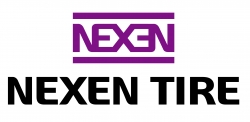 Jongchan Kim
Jongchan KimVehicle dynamics
Nexen Tire Co. Ltd
Republic of Korea
Recently, interest in virtual development has been increasing in OE tire development. Nexen Tire has been preparing for virtual development for the past 10 years, and is currently showing some results in OE development projects. AI prediction technology is one of them, and this presentation introduces Nexen's AI prediction technology for force and moment characteristics, which are key to tire virtual development, and how to utilize it in vehicle dynamics simulation.
What the audience will learn
- Nexen AI prediction strategy for F&M characteristics
- Nexen AI prediction level for F&M characteristics
- Application of AI prediction to virtual tire model
- Key issues in AI prediction model development
- Nexen AI model development direction for F&M characteristics
09:25
Advances in physical modeling applied to tire and vehicle simulations
Vehicle dynamics researcher and company CEO
UniNa/MegaRide
Italy
This presentation aims to provide scientific updates from the laboratories of the tire and vehicle dynamics research group of the University of Naples, before they become new features of the simulation software developed by the group's spin-off companies. The main research topics concern the role of road roughness analysis and reproduction in real-time comfort and handling models, and with tire wear and degradation mechanisms, influenced by viscoelasticity evolution and affecting contact friction and thermodynamics. Each topic comprises the experimental, parameters identification and model implementation phases.
What the audience will learn
- The role of road roughness in friction, both in local contact phenomena and in ride dynamics
- How the tire wear model can be used for racing analysis and for particulate predictions in sustainability scenarios
- Tire models as a mix of integrated physical modules, from thermodynamics to wear, from viscoelasticity to friction
- Tire viscoelasticity analysis with non-destructive innovative methods, applied to performance optimization and quality control
- How scientific activities evolved in the team's history of tech transfer, from the lab environment to the market
09:50
The latest modeling and testing developments at Jaguar Land Rover
 Jan Prins
Jan PrinsTechnical group leader
Jaguar Land Rover (JLR)
UK
 Sujan Dinesh
Sujan DineshSME physical tyre model
Jaguar Land Rover
UK
Overview of the latest modeling and testing developments at Jaguar Land Rover, with a focus on developments made since last year's presentation in 2024.
What the audience will learn
- Approach to tire modeling in JLR
- Approach to tire testing in JLR
- The introduction of the CDTire type of tire model into JLR
10:15
Indoor testing of tires in wet conditions: a comparison study
 Carlo Lugaro
Carlo LugaroResearch engineer
Siemens Digital Industries Software
Netherlands
 Jonathan Darab
Jonathan DarabOperations director
Global Center for Automotive Performance Simulation (GCAPS)
USA
Indoor tire testing facility developments offer the opportunity to accurately measure the tire response in wet conditions in the laboratory. Tire specifications of different sizes and constructions have been recently tested under comparable conditions. The results of these tests are analyzed, making use of both physical and semi-empirical models. Moreover, the measurements are used to identify the parameters of the recently developed wet module extension of the MF-Tyre/MF-Swift model. This model is applied in vehicle dynamic simulations to study the effect of wet road tire behavior on vehicle dynamic performance.
What the audience will learn
- Tire and vehicle dynamics
- Indoor testing of tires in wet conditions
- The effect of water on the tire response
- How different tire constructions can affect the response on wet roads
- How the tire response on wet road affects the vehicle dynamics
10:40 - 11:10
Break
11:10
Tire NVH prediction based on sizes and pattern shape using CNN and ANN program
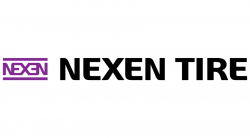 Dr Sungwook Hwang
Dr Sungwook HwangNVH supervisor
Nexen Tire Co. Ltd
Republic of Korea
Requirements for vehicle noise reduction result in the increasing importance of tire NVH design. Nexen has recently developed an AI-based NVH virtual prediction tool using CNN and ANN theories, utilizing MATLAB. In this presentation, there are correlations of virtual NVH prediction and real test results which can be used for guidance in noise reduction.
What the audience will learn
- NVH AI prediction for tire size and structure
- NVH mechanism according to tire size
- NVH design process for OE development
- Virtual prediction for tire NVH
- The guide for the NVH design process
11:35
Analysis of self-excited vibrations by combining simulation and testing
 Prof Dirk Engel
Prof Dirk EngelProfessor
HAW Hamburg
Germany
The non-linear tire slip response, characterized by a peak friction and subsequent decay, makes the wheel system, in specific operating conditions, a marginally stable system: self-excited vibrations are produced. Typical examples are longitudinal vibrations of the powertrain (sometimes also referred to as power-hop) and lateral vibrations of the tire in extreme understeer or oversteer situations. To study this phenomenon, different measuring and modeling methodologies have been recently developed. This presentation reviews these methodologies and demonstrates how testing and modeling can leverage each other to produce a consistent framework to approach the self-excited vibration problem.
What the audience will learn
- Tire-road interaction
- Tire slip response
- Self-excited oscillations
- Simulation
- Testing
12:00
Truck tire thermal analysis for performance optimization and predictive modeling
 Francesco Zito
Francesco ZitoMathematical model engineer
Prometeon Tyre Group
Italy
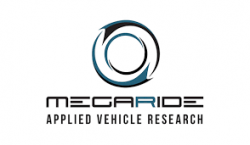 Michele D'Inverno
Michele D'InvernoVehicle application and integration engineer
MegaRide
Italy
In the tire industry, the importance of the thermal behavior of a tire and its impact on key performance metrics such as durability, dynamic behavior and rolling resistance is well known. To evaluate temperature at crucial points of the tire, experimental activities were conducted using an innovative indoor methodology with embedded vulcanized sensors. The collected data, besides the thermal performance evaluation of different tread compounds, supported the validation of a thermal prediction model for truck tire temperatures in rolling conditions, developed in collaboration with Megaride.
What the audience will learn
- How temperature affects key tire characteristics such as durability, dynamic behavior and rolling resistance
- The use of embedded vulcanized sensors for accurate temperature measurement in critical tire areas during testing
- The new indoor methodology used to assess thermal performance across different tread compounds
- How real-time temperature data is used to validate a predictive model for truck tire temperatures in rolling conditions
- Insights into how collaboration with Megaride contributed to enhancing the thermal prediction model, enabling more precise tire performance forecasts
12:25
Predictions of dynamic-mechanical response of tire tread compounds
 Arsen Tskhay
Arsen TskhayEngD candidate
Apollo Tyres
Netherlands
The dynamic-mechanical response of tire tread is a highly complex problem. The non-linear nature of filled elastomers and the real-life working conditions of tires, such as various temperatures, high strains and frequencies, present significant challenges for testing and prediction. This presentation explores the results of dynamic mechanical analysis (DMA) of tire tread formulations with a focus on dynamic strain sweeps. By varying individual ingredients in the formulation and their loadings, effects on storage and loss modulus are investigated. Based on obtained experimental data, existing models are used and compared to predict and simulate the storage and loss modulus of tire treads.
What the audience will learn
- Challenges of dynamic-mechanical response of filled rubbers
- Impact of material composition and testing conditions on storage and loss modulus
- Challenges of modeling complex behavior of filled elastomers
- Dynamic strain sweeps and their limitations
- Value of combining DMA testing and modeling for tire applications
12:50 - 14:00
Lunch
Moderator
 Prof Dirk Engel
Prof Dirk EngelProfessor
HAW Hamburg
Germany
14:00
Exterior noise reduction of tires using active control
 Dr Dan O'Boy
Dr Dan O'BoySenior lecturer in structural dynamics
Loughborough University
UK
Vehicle external noise is typically controlled through legislation, for example ISO 362. Future electric vehicles are relatively heavy and thus have wider tire width. As the tire noise is the dominant external noise from the vehicle, it is important to look at methods of reduction. Improvements in active noise control have been made for interior noise, which has an arguably simpler transmission path. The exterior noise, and in particular the lower-frequency modal response, is examined for active control implementation, using reference microphones and directional sound sources. Complications such as the horn amplification, random excitations and scattering are covered.
What the audience will learn
- Exterior noise challenges for electric vehicles, including urban planning and safety
- Active control limitations and why the success of interior control isn't straightforward to replicate outside of the vehicle
- Novel directional sound sources as alternatives to existing speaker technologies, using non-linear sources
- Exterior sound reduction possibilities for urban driving, where building accommodation closer to roads is increasing
- Reductions of exterior noise can be shaped according to direction of travel and thus linked to safety of pedestrians
14:25
Dielectric and mechanical response of filled elastomers: frequency-temperature relationships
 Kirsty Rutherford
Kirsty RutherfordPhD student
Queen Mary University of London
UK
Assessing the frequency-dependent behavior of elastomers is crucial for evaluating the rolling resistance and wet grip properties of tires. Traditionally, dynamic mechanical analysis has been employed to measure this behavior but a standard DMA is unable to reach the necessary frequencies for evaluating tire performance. This can be addressed through time-temperature superposition; however, this introduces additional processing errors, particularly with filled elastomers. Alternatively, impedance spectroscopy offers a quick non-destructive method to evaluate the high-frequency behavior but has limitations for measuring highly-filled conductive carbon black compounds. This work compares both methods and examines the relationship between carbon black colloidal properties and frequency-dependent behavior.
What the audience will learn
- Both dielectric and mechanical methods can measure α-relaxation processes and yield identical shift factors for William-Landel-Ferry (WLF) relationships
- Variations in peak positions in tan delta/dielectric loss reveal important differences in the dimensions of the two measurements
- The role of structure and surface area of the fillers on the frequency-dependent behavior of the elastomer composites is revealed
- Dielectric behavior measured at high strains follows Guth-Gold relationships
- Surface area of carbon black dominates the broadening of the tan delta/dielectric loss
14:50
The way to zero prototypes through a driver-in-the-loop approach
 Ulf Kossenjans
Ulf KossenjansTest coordinator
EDAG Engineering GmbH
Germany
In the rapidly changing automotive industry, virtual tire methodology is the solution to catch up with front loading of development activities. This presentation gives insights into the way to zero prototypes through a driver-in-the-loop approach. The concept of 'feeling the reality' is discussed and how it tackles the current challenges in simulator use. The simulator center is introduced and how its cutting-edge technology enables model-based tire development targeting dynamics and NVH attributes. An outlook on possible hardware-in-the-loop installations in combination with dynamic simulator technology is given.
What the audience will learn
- How to accelerate tire and vehicle development processes by transitioning from physical prototypes to advanced virtual simulations
- How to improve attribute setting like handling and NVH by linking human feedback from dynamic simulations with objective tire characteristics
- How to align a productive definition process from overall vehicle targets to tire and wheel system aspects
- How to enhance the spectrum of assessability regarding NVH targets by unique simulation equipment
- How to contribute to a more sustainable development via resource efficiency, cost savings and a reduced carbon footprint
15:15 - 15:45
Break
15:45
Prediction of elastomer properties using convolutional neural networks
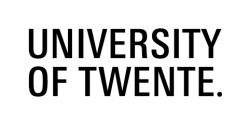 Dr Dengpeng Huang
Dr Dengpeng HuangAssistant professor
University of Twente
Netherlands
To predict the elastomer properties from its microstructures, material models in different scales have been developed ranging from the molecular level to the macro level. However, the application of these models is limited by either the computational costs or their accuracy. Efficient but accurate modeling is still missing. Due to its promising prediction performance, machine learning provides a suitable alternative to traditional methods. In this study, the tensile properties of elastomers are predicted from the expanded TEM images using convolutional neural networks (CNN). The CNN model shows good accuracy and efficiency in prediction.
What the audience will learn
- Microstructures of carbon black (CB) fillers
- Tensile properties of elastomers
- Design of convolutional neural networks (CNN)
- Regeneration of the TEM images of CB-filled rubber
- Prediciton of material properties using the CNN-based model
16:10
Impact of thermodynamics on tire-brake interaction and vehicle safety
 Andrea Stefanelli
Andrea StefanelliPhD student
University of Naples Federico II
Italy
The interaction between brakes and tires is essential for vehicle safety and performance. This study presented by Brembo and the University of Naples examines how thermodynamic changes in tires affect safety systems like ABS and ESC. By comparing simulated and experimental data, the research reveals how braking and tire performance shift under different conditions. A central focus is on MF Tire 5.2 and 6.2 models, showing how thermodynamic factors influence ABS in both longitudinal and lateral maneuvers. Brembo’s expertise enhances the findings, providing valuable insights into braking and steering dynamics, crucial for future advancements in vehicle safety and performance optimization.
What the audience will learn
- How thermodynamic changes in tires impact vehicle safety systems like ABS and ESC
- The relationship between braking performance and tire behavior under different conditions
- Influence of thermodynamic factors on vehicle handling and stability during maneuvers
- Key insights into optimizing braking and steering dynamics for improved safety
- Importance of understanding tire-brake thermal interaction for future vehicle performance advancement
16:35
Tire design and performance optimization through virtual technology
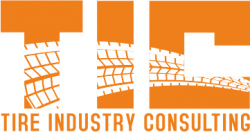 Haluk Kizilay
Haluk KizilayManaging director
TIC – Tire Industry Consulting
Germany
New product development (NPD) is a key process for all tire groups and NPD time is crucial. Virtual technologies enable the launch of world-class products faster and more cost-effectively than ever. TIC developed a unique 'virtual technology implementation' concept. It would be useful for all tire manufacturers to have an efficient and effective virtual technology process. TIC's key motto is 'Speed to market with right solution and innovation'. The presentation's main points are how to establish virtual technology, how to start simulation, tire engineering enhancement, model validation and verification and other important points.
What the audience will learn
- The latest technical challenges in smart tire design and development
- How to establish an effective NPD process by using virtual techniques
- How to create a winning technical team for smart tire development
- Holistic view for smart tire new product development through virtual technology
- Virtual model validation and verification and important points
17:00
Aerodynamic impact of tire shapes, particularly on electric vehicles
 Alejandro Martinez
Alejandro MartinezIndustry process expert
Dassault Systèmes
Sweden
As the automotive industry increasingly shifts toward electrification, minimizing vehicle drag becomes essential to enhance autonomy range and meet consumer expectations. Additionally, a recent European regulation (WLTP) requires car manufacturers to provide reliable emissions values for all the vehicle configurations, emphasizing the relevance of achieving accurate drag results. Among the largest contributors to the overall drag of the vehicle are the tires. This presentation leverages PowerFlow’s simulation capabilities to explore how tire shape differences can affect aerodynamics and force coefficients, particularly with clean underbody designs like in electric vehicles.
What the audience will learn
- PowerFlow’s unparalleled simulation capabilities for rotating tire using the immersive boundary method
- Aerodynamic effects of tires on global vehicle aerodynamics
- Relevance of tire shape and geometric details for vehicle’s autonomy range
- Differences in interaction of the tire wake with EV and ICE underbody design
- Accentuated impact on EV lift coefficient as a result of the underbody differences
Day 3: Thursday, March 6
New York 1
Sustainability and the circular economy in the tire industry - Day 3
09:00 - 10:40
Moderator
 Dr Juan J. García
Dr Juan J. GarcíaProject manager
Applus IDIADA
Spain
09:00
Raising sustainability content through steel cord innovations
 Wei Ye
Wei YeVice president responsible for circular and sustainable solutions
Jiangsu Xingda Steel Tyre Cord Co.
China
For many years, steel cord has been one of the hurdles ahead of tire makers who want to increase sustainable content in their tires. In this paper, Xingda sets out its plans to raise circular content in its steel cord, so that tire makers can increase their own sustainable content. Xingda aims to source 15% of all raw materials from recycled steels this year (2025) and to raise that to 40% by 2030. In addition to targets of carbon neutrality by 2050, the plan calls for less waste and more recycling of waste products, reduced packaging and low-carbon operations. Xingda has affirmed its sustainability credentials with affirmations from Ecovadis (Gold), CDP (A-), SBTi and other independent authorities.
What the audience will learn
- Sustainability model and selected substantial topics
- Sustainability initiatives and glories
- Roadmap to circular economy & carbon neutrality and how to achieve
09:25
Chloramine devulcanization: new standards in carbon black and rubber recovery
 Dr Patrick Kroeger
Dr Patrick KroegerChief technology officer
Arduro
Canada
Arduro introduces a chloramine-based devulcanization process for end-of-life tires to recover up to 95% of materials including carbon black, polymer, processing oil and silica. Operating at low temperatures (below 100°C) and low pressures, and using non-toxic chemicals, selective devulcanization breaks sulfur cross-links while maintaining the carbon-carbon polymer backbone. Leveraging this technology, Arduro has commercialized Eldarix r1000 rCB, which can replace virgin carbon black in rubber products without loss of performance. This innovation provides a viable, environmentally benign solution for ELTs, crucial for sustainability in the rubber industry by managing ELTs, developing a sustainable lifecycle for tires and promoting a circular economy.
What the audience will learn
- Arduro's novel approach to ELT management through devulcanization and separation, allowing for reintegration of recovered materials
- The importance and value of selective devulcanization, and its role in accessing individual components of such a complex material
- The differentiation from other recycling methods (pyrolysis, thermo/mechanical devulcanization) and the advantages and disadvantages associated with our unique approach
- Arduro's current product offerings, including Eldarix r1000 recovered carbon black and customized Circularity as a Service (CAAS) model.
- Arduro's ongoing development including high MW polymer recovery, processing oil separation and future growth to recover 95% ELT materials
09:50
Innovative method to incorporate a devulcanization aid into rubber
 Katerina Filzer
Katerina FilzerPhD candidate
University of Twente
Netherlands
Over the past decade, rubber recycling has become a topic of great interest. In the European Union alone over 300 million end-of-life tires are discarded yearly, but this material can be recycled and reused. Various devulcanization technologies were developed to produce a high-quality recycled rubber from end-of-life tires; however, one of the main challenges remains to distribute the devulcanization agent equally within the rubber matrix. Within this study, an innovative technology was developed based on the incorporation of the devulcanization agent at an earlier stage during the production of the rubber product and activation in the thermomechanochemical devulcanization process.
What the audience will learn
- The challenges of conventional devulcanization technologies
- An innovative technology to homogenously incorporate a devulcanization agent
- How this novel process is different from already established processes
- How this new technology makes the devulcanization process more efficient
- The potential of this high-quality devulcanizate for application in new rubber products
10:15
Bio-based rayon for sustainable tire reinforcement
 Dr Christoph Partes
Dr Christoph PartesSustainability and compliance manager
Cordenka
Germany
Cordenka rayon is a versatile, bio-based material with mechanical and thermal properties optimized for UHP applications in the tire industry and also for different products in the field of mechanical rubber goods (MRG). Rayon's base is non-fossil cellulose that is sustainably managed and renewable. The product carbon footprint of rayon originates from energy required during production. Since sustainability became top priority at Cordenka, a dedicated sustainability management team has been installed. Cordenka has a clear sustainability roadmap and is committed to reducing its Scope 1 & 2 emissions by 34% from 2018 to 2030, a pathway in line with the targets of Tier 1 tire producers. This pathway is approved by the Science-Based Targets initiative (SBTi). Reaching the target in 2030 will allow Cordenka to provide a low-PCF, bio-based, high-tensile rayon to the tire and MRG industries.
What the audience will learn
- How Rayon as biobased tire reinforcements material affects use-phase emissions
- Which material intensities are required to achieve higher performance with less carcass material
- CORDENKA roadmap on reduction of carbon dioxide emissions during production
- Sustainability comparison of Rayon with other materials
10:40 - 11:00
Break
Day 3: Thursday, March 6
New York 1
Emission and wear analysis and testing
11:00 - 15:00
Moderator
 Dr Juan J. García
Dr Juan J. GarcíaProject manager
Applus IDIADA
Spain
11:00
Understanding and mitigating the effects of tire particle emissions
 Dr Juan J. García
Dr Juan J. GarcíaProject manager
Applus IDIADA
Spain
The wear and tear of car tires is a major source of microplastic pollution. Through road friction and exposure to environmental conditions, the tire material degrades into small particles that are carried into the environment by air or rain. One of the goals of the EU-funded https://www.leont-project.eu/ (LEON-T) project, presented here, is to better understand tire-generated microplastics. Tire wear is considered one of the largest sources of microplastic emissions and LEON-T has been working on estimating the generation, transportation and transformation of these tire wear particles through the environment.
What the audience will learn
- Measurements of the generation of tire particles
- Transportation of tire particles from the source into the environment
- Transformation of tire particles in the environment
- Health effects associated with tire particles
- Strategies for tire particles mitigation and control
11:25
Advanced tire-road friction model integrating local contact mechanics analysis
 Raffaele Stefanelli
Raffaele StefanelliPhD student
University of Naples Federico II
Italy
This research presents an advanced friction model for tire-road contact using a Greenwood-Williamson approach to evaluate local contact mechanics. The model integrates tire compound viscoelastic characterization with detailed road roughness analysis across both macro and micro scales. It computes the ratio of real-to-nominal contact area under different conditions, providing insights into how surface texture, tire viscoelasticity and operating conditions affect the maximum achievable friction. The model was validated using both indoor and outdoor data across different scenarios, demonstrating its potential for optimizing tire selection and vehicle setup to maximize grip in motorsport environments.
What the audience will learn
- Road roughness analysis on both the macro and micro scale
- Tire viscoelasticity characterization with a non-destructive approach
- Tire/road local contact mechanics analysis
- Tire friction evaluation on both indoor and outdoor environment
- Tire friction modeling for performance optimization
11:50
Innovative rapid dynamic abrasion test method for tire tread compounds
 Dr Marzieh Salehi
Dr Marzieh SalehiR&D manager
VMI Group
Netherlands
Predicting tire wear performance on the road within a laboratory environment is paramount in developing tread compounds, as wear testing is one of the most unsustainable, expensive and time-consuming processes in the tire industry. The well-established Grosch abrasion test on the LAT100 was designed to estimate mathematically common daily driving scenarios based on speed and energy dissipation, in accordance with the ISO 23233 standard. This presentation introduces a novel dynamic abrasion test that significantly reduces test time (by at least 12 times) while demonstrating excellent agreement with the Grosch test matrix without requiring intra- and extrapolation mathematical models.
What the audience will learn
- Novel prediction of abrasion using a unique, innovative dynamic test method
- First-ever indication of abrasion prediction achievable within minutes
- Results demonstrate excellent agreement with the Grosch test matrix, as per ISO 23233
- Verification of results was successfully conducted for three sets of model compounds with well-characterized wear properties
- The prediction is based on rapid direct measurements not a intra- and extrapolation mathematical calculations, thereby enhancing accuracy
12:15
Predicting tire performance on asphalt from indoor measurements
 Dr Marco Furlan
Dr Marco FurlanSenior modeling and simulation engineer
Calspan
USA
Indoor tire testing provides a controlled environment to obtain highly repeatable and consistent data across a wide range of test conditions. However, concerns arise regarding the difference between the road surface of indoor facilities – typically sandpaper – and real-world asphalt. The presentation proposes a novel indoor testing methodology to predict the change in tire performance when transitioning from sandpaper to asphalt surfaces, eliminating the need to retest tires on asphalt. This approach exploits the repeatability and accuracy of indoor testing to develop a predictive estimate of tire performance change (such as Magic Formula scaling factors) for asphalt based purely on indoor measurements.
What the audience will learn
- The benefits of indoor tire testing
- The differences between the sandpaper surface of indoor facilities and real-world asphalt
- The importance of adjusting tire models derived from indoor testing to accurately reflect real-world asphalt conditions
- A new indoor testing methodology designed to predict changes in tire performance when transitioning from sandpaper to asphalt
- How the proposed estimates Magic Formula scaling factors based solely on indoor measurements
12:40 - 13:45
Lunch
13:45
A method to visualize chemical emissions when rubber heats up
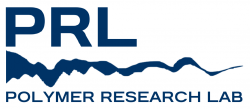 Dr Radek Stocek
Dr Radek StocekGeneral manager
PRL Polymer Research Lab
Czech Republic
When driving a vehicle, not only does tire abrasion occur, generating very large amounts of small rubber particles, but there is also an enormous production of gases, known as chemical emissions, that are released into the environment. These gases are generated mainly when the tire heats up during rolling, but they are maximally emitted into the air during the total collapse of the tire, known as blow-up. This study will introduce an experimental laboratory method of the heat build-up process (HBU) from room temperature to blow-up, with visualization of the generation and emission of gases into the air.
What the audience will learn
- Not only tire abrasion burdens the environment but also chemical emissions are responsible for its pollution
- Self-heating of the tire by rolling leads to chemical emission
- Chemical emission can be simulated in the laboratory using a measuring method and can be visualized
- Gases are produced in tires during rolling, but they are emitted to the air first when the tire fails
- The chemical emission of gases for different types of rubbers used for varied tire applications will be presented
14:10
Flat-Trac testing with a realistic surface
 Jonathan Darab
Jonathan DarabOperations director
Global Center for Automotive Performance Simulation (GCAPS)
USA
As virtual engineering accelerates in the automotive industry, engineers generally have to decide between testing indoors on sandpaper, or outdoors on real asphalt. Both methods have distinct advantages and disadvantages. To utilize the advantages of indoor testing, GCAPS has been developing and refining an asphalt-like surface which can be mounted to the LTRe Flat-Trac: Asphaltant. The presentation will show data from various tire test methods and constructions plus recent improvements that make this technology a long-term solution that maximizes the repeatability that indoor testing doubtless brings, but on a truly representative surface – thereby enabling realistic tire and vehicle simulations.
What the audience will learn
- Why sandpaper-based tire models can be unrealistic
- How GCAPS has developed an indoor surface which is more realistic than sandpaper
- How Asphaltant is manufactured
- How tire models compare between sandpaper and Asphaltant
- The upside to using more realistic tire models within vehicle simulations
14:35
The novel approach to deconvolute wear rate into different components
 Evangelos Koliolios
Evangelos KolioliosPhD student
Queen Mary University of London
UK
This paper explores the idea of deconvoluting the measured wear rate of a tire tread compound into different components such as abrasive wear and smear wear with the ultimate goal of elucidating tire tread wear phenomena. A custom-built surface abrasion machine was used to investigate the wear behavior of tire tread compounds made from either synthetic polyisoprene rubber or styrene-butadiene rubber, reinforced with either carbon black or silica. The findings of this research will be discussed in the contexts of compound design and optimization, wear testing improvements and wear modeling.
What the audience will learn
- How wear rate can be deconvoluted into individual components
- How compound formulation influences each individual wear component
- How the individual components can be modeled as an attempt to predict compound abrasion performance
- How the drying powder application rate can be adjusted to reflect compound composition and test severity
- How to optimize tire compound composition and testing to achieve more sustainable tire tread design
Day 3: Thursday, March 6
New York 2
Developments and innovations in materials, chemicals and related processes - Day 3
09:00 - 15:00
Moderator
 Dr Abilash Nair
Dr Abilash NairMaterials development manager
Dunlop Aircraft Tyres Ltd
UK
09:00
Solution to slash carbon footprint and costs, preserving tread performance
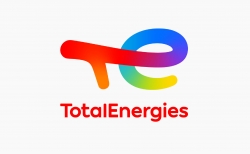 Lionel Riou
Lionel RiouGlobal business development manager
Cray Valley, a member of TotalEnergies
France
Cray Valley has a long history with tire manufacturers, focusing on excellence in tire compounds, especially in the tread area, for over 30 years. In response to customer demands for new developments and sustainability, Cray Valley has developed a new grade that meets several key factors: customer constraints, final product performance, environmental impact and cost. The new grade, which is in the final stage of homologation, offers 20% less CO2 emissions, 50% less water consumption and nearly 10% less fossil resource depletion. It ensures customer satisfaction and matches the performance of existing grades while reducing costs.
What the audience will learn
- Cray Valley went through the value chain of its grades, from cradle to gate, resulting in a deeper awareness of the factors impacting environment
- A bespoke solution has been designed, equal to existing grade performances. Wet grip, handling and rolling resistance are preserved
- New grade's environmental footprint improvements include 20% less CO2 emissions, 50% less water consumption and nearly 10% less fossil resource depletion
- New grade's cost-effectiveness compared to standard grades. Total variable cost has been reduced to a very attractive level
09:25
Managing polymer filler interactions for better tire processing and properties
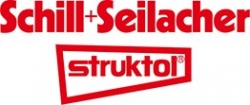 Dr Felix Niefind
Dr Felix NiefindRubber application laboratory manager
Schill+Seilacher Struktol
Germany
Using new additive chemistry it is possible to control polymer filler interactions leading to more efficient mixing and superior down-line processing characteristics. The ability to influence both internal and external interactions allows for better management of the behavior of compound interfaces and as a result both tack and tear properties are more easily controlled. Vulcanization efficiency leading to better compound stiffness and management of hysteresis are also evident. Several examples based on advanced silica and carbon black-filled systems suited to different tire components are featured. The contribution toward both processing and tire energy efficiencies are highlighted.
What the audience will learn
- Processing efficiency for highly filled systems
- Process additive chemistry influence on filler interactions
- Optimization of compound tack property during processing and tear properties of vulcanizates
- Vulcanization efficiency influenced by additive usage
- Energy-efficient compounding and contribution toward energy efficiency within the tire
09:50
Evaluation of the curing package for eco-friendly tire tread compounds
 Frances van Elburg
Frances van ElburgPhD student and junior lecturer
University of Twente
Netherlands
The goal of the study is to understand the different behavior of conventional accelerators in silica-filled S-SBR/BR to find a bio-based alternative. It was recently discovered that zinc oxide and stearic acid are not needed to activate the curing reaction in high vinyl S-SBR. Therefore, accelerators with different chemical functional groups were evaluated in simplified tread compounds with and without activators. The interactions between activators, accelerators and sulfur were further studied, as well as the mechanism of the vulcanization reaction. The outcome of the study forms a starting point for the development of a more sustainable accelerator.
What the audience will learn
- Curing behavior of compounds with various primary accelerators in combination with activators (ZnO/stearic acid)
- Curing characteristics of selected primary accelerators in compounds without activators (ZnO/stearic acid)
- Activators (ZnO/stearic acid) function as retarders instead of activators in a high vinyl S-SBR compound
- Why the curing behavior of the compounds differs, focusing on the curing mechanism and chemistry
- Ideas on how to improve the curing behavior of the compounds with more sustainable substances
10:15
Influence of polymer microstructure-phase morphology-property relationship on tire performance (part 2) and extension of the magic triangle
 Anup Mondal
Anup MondalFirst line manager
Apollo Tyres Global R&D BV
Netherlands
In tire technology, tire development focuses on three critical properties: rolling resistance, tread wear and wet grip, which form the 'magic triangle'. It is so called because if one tire property is improved, the other properties are deteriorated. The main challenge for tire development is to improve two or three properties without deteriorating the other parameters negatively. In tread compounds, SSBR, silica and resin are usually used to maintain tire performance. It is very challenging to achieve or balance tread rubber performance as desired. This seminar also justifies different types of tire features as per weather or geography. At last year's Tire Expo Apollo Tyres demonstrated the effect of polymer microstructure-property relation on tire performance (part 1). This year it will demonstrate the effect of liquid material/oil/resin influence on the polymer microstructure-phase morphology-property relationship on tire performance (part 2). This approach gives a choice for expanding the magic triangle. The resultant direction can be used to achieve the preferred tire performance.
What the audience will learn
- Tyre performance parameter
- Tyres features as per weather/geography
- The design of tread compound
- Impact of polymer microstructure-phase morphology - property relationship on tyre performance
10:40 - 11:00
Break
11:00
Understanding the transitions in the abrasion behavior of tires
 Eathan Plaschka
Eathan PlaschkaPhD student
Queen Mary University of London
UK
Styrene-butadiene rubber (SBR) tire tread compounds varied by carbon black loading and cross-link density have been tested to evaluate their performance. This study presents an evaluation of the friction and wear properties using a uni-directional dynamic loading sequence, whereby a single tread block undergoes deformation in periodic intervals. Testing was conducted under different loading and temperature conditions. Transitions between abrasive and smear wear mechanisms are observed through the evolution of the friction and surface morphology. Optical microscopy techniques are used in the post-test phase to showcase how the fracture and friction of the compound evolve over time.
What the audience will learn
- The relationship between friction and the wear mechanisms for SBR tire tread compounds
- Mechanisms behind the origin of abrasive and smear wear
- Wear surface morphology changes depending on the input conditions (including loading and temperature)
- Elevated operating temperatures result in a shift in the relationship between the wear rate and friction mechanism
- Optical microscopy techniques can showcase how the fracture process evolves over time
11:25
Advanced technology in ENEOS-SBR: driving tire performance and ecological impact
 Dr Harutaka Nakamori
Dr Harutaka NakamoriAssistant manager
ENEOS Materials Corporation
Japan
To reduce CO2 emissions, the automotive and tire industries seek to improve rolling resistance, wear resistance, durability and grip in compounds, raw materials and synthetic rubber, along with using sustainable and recycled materials. Research on styrene-butadiene rubber (SBR), the main tread compound material, has focused on modification technology, increasing molecular weight to improve tensile strength and wear resistance. This study utilizes ENEOS's accumulated expertise in polymer technology to introduce various chemical modifications to the backbone of SBR, investigating how these changes impact the physical properties and composition of the compound, and explaining their contribution to reducing CO2 emissions.
What the audience will learn
- Effect of SBR structure on physical properties and tire performance
- Analysis of compound structure and hypotheses linked to physical properties
- Proposal of our unique polymer design can realize circular economy
- Continue to provide solutions with our technologies to enhance tire performance and create new value in the future
- Challenge of achieving both stable supply of materials and realization of a carbon-neutral society
11:50
Multi-functionalized, highly coupled SSBRs allowing for improved sustainability in tires
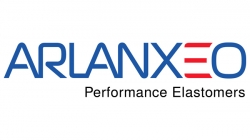 David Hardy
David HardyTechnical service and development manager
Arlanxeo Netherlands BV
Netherlands
Current requirements for tire treads are increasingly focused on improved wear resistance to reduce TRWP and increased use of sustainable materials. Polymers such as NdBR and functionalized S-SBRs play a crucial role. Arlanxeo’s new functionalization technology allows for multi-functionalization to gain strong interaction with fillers and exceptionally high coupling for good processability despite the high molecular weight required. These occur simultaneously. It will be shown how bio-circular and circular feedstocks can be employed to produce monomers which in turn can be converted into new elastomers with a significantly lower product environmental footprint for improved sustainability.
What the audience will learn
- Functionalized SSBR
- High molecular weight FX SSBR
- Processability
- Sustainable tire rubbers
12:15
An easily applicable additive for green tires
 Munenao Hirokami
Munenao HirokamiSenior researcher
Shin-Etsu Chemical
Japan
Much attention has been paid to sustainability, such as limiting CO2 emissions as well as microparticle pollution throughout the whole process of the tire industry, including at the consumer level. The authors have suggested several new silanes bearing either a mercapto or sulfide group to improve some of those aspects. Nevertheless, using these silanes requires a lot of empirical knowledge and brings certain challenges. The presentation reports a prominent additive that enables the company to accomplish high rubber durability and excellent hardness without losing reasonable processability, leading to less process dependence and more intuitive use than the conventional system.
What the audience will learn
- Additive
- Improved durability
- Improved hardness
- Good processability
- For green tires
12:40 - 13:45
Lunch
13:45
From liquid polymers to sustainable and high-performance tires
 Dr Marcel Gruendken
Dr Marcel GruendkenSenior manager
Kuraray Europe GmbH
Germany
Liquid polymers are a unique material segment that bridges the gap between plasticizers and traditional polymers, often referred to as 'reactive plasticizers'. These materials enhance tire fuel efficiency, mileage and safety. This presentation introduces the technology and highlights the differences between liquid polymers, elastomers and plasticizers. It provides an overview of the selection by showcasing formulation examples and case studies. A special focus will be placed on functionalized liquid polymers and their contributions to improving the carbon footprint.
What the audience will learn
- Liquid polymers as one material among plasticizers and elastomers
- Technology, history and today's applications
- Selection and case studies with different formulations
- Functionalized liquid polymers and their contribution to more sustainable tires
- Green transformation of specialty chemicals
14:10
Application of new additive silica dispersant
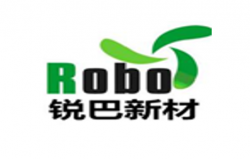 Kiran Pemmaiah
Kiran PemmaiahTechnical and business development manager
Jiangsu Ruiba New Material Technology Co. Ltd
China
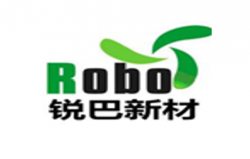 Zhimin Yao
Zhimin YaoMarketing director
Rebo New Material Group
China
Green tires are gradually being accepted by the public for their comfort, safety, environmental protection and energy saving, and demand and production are increasing day by day. A large number of research results show that using silica as a reinforcing filler in tire tread rubber can significantly reduce the rolling resistance of the tire. However, as the amount of silica in the formula increases, the rubber compound mixing process becomes difficult, as well as the silica black dispersion difference. Ruiba New Material Technology is committed to developing new silica dispersants to help tire companies solve the problems faced by high-fill silica formulas in rubber compound mixing. This presentation introduces the mechanism of action of the new silica dispersant, its impact on the process and physical properties of the rubber compound, and relevant experimental research data.
What the audience will learn
- The mechanism of action of silica dispersant
- Benefits of using silica dispersants
- Application of silica dispersant
- Reduction in energy consumption
14:35
Market needs driving the use of high-surface-area silicas
 Dr Lucas Dos Santos
Dr Lucas Dos SantosSenior research associate
Qemetica
USA
There is a global increase in the number of electric vehicles on the road, which require tires with new specifications. Sustainability efforts also demand tires with improved wear resistance and low rolling resistance. High-surface-area silicas can provide technical solutions to the new requirements. The presentation will discuss how to select the optimum silica for a certain application and the benefits and drawbacks of high-surface-area silicas in rubber compounds. Furthermore, the presentation will discuss how to process compounds to obtain the best performance out of these silicas.
What the audience will learn
- High-surface-area silica performance benefits
- Challenges when using high-surface-area silicas
- Silica compounding
- Tire market drivers
- New tire technical needs
Day 3: Thursday, March 6
Five Continents
Innovations and best practices for advanced manufacturing and inspection - Day 3
09:00 - 12:40
Moderator
 Bill Henderson
Bill HendersonHead, USA tire industry
Siemens Industry
USA
09:00
Operational excellence and sustainability: asset management in Industry 4.0
 Kathryn Houk
Kathryn HoukIndustry leader, tire and rubber
Rockwell Automation
USA
Effective asset management is crucial for driving manufacturing operational excellence, mitigating risks and advancing sustainability initiatives. Join Kathryn Houk, Rockwell Automation’s tire industry leader, to explore how a strategic, data-driven approach to asset management can unlock significant benefits for tire manufacturers in the Industry 4.0 era. Through real-world case studies and tire industry best practices, this session will equip attendees with the insights and strategies needed to transform their asset management approach and unlock the full potential of their manufacturing operations.
What the audience will learn
- Improving manufacturing efficiency: predictive maintenance, real-time monitoring and integrated asset lifecycles can optimize equipment uptime and drive productivity gains
- Mitigating operational risks: proactive asset management can help identify and address potential failure points, ensuring business continuity
- Advancing sustainability goals: asset management aligned with circular economy principles can minimize waste, enhance energy efficiency and support ESG goals
- Applying digital tools: Industry 4.0 technologies like AI can unlock value in an asset management practice
- Use cases and benchmarking: explore real-world use cases and industry benchmarks for manufacturing asset management
09:25
Data integration and artificial intelligence in material testing
 Charles Jouanique
Charles JouaniqueChief revenue officer
LabV Intelligent Solutions GmbH
Germany
Labs in the rubber and tire industry often struggle with fragmented data from various sources, hindering product development and causing loss of valuable knowledge. Quality control issues, such as identifying failing batches too late, result in costly wastage. This presentation will explore how innovative digital platforms centralize data management, resulting in enhanced data analysis, process efficiency and time savings, ultimately making companies more competitive. Additionally, the presenter will discuss the role of artificial intelligence in quality control and product development of rubber formulations and tire designs, showcasing its ability to uncover hidden correlations and offer rapid visualizations, improving overall efficiency.
What the audience will learn
- How manufacturers and developers can turn their data into better products by improving R&D and QC efforts
- How innovative digital platforms address data fragmentation challenges
- The impact of centralizing data on reducing costs and increasing efficiency
- How AI supports R&D and quality control departments to exploit their data
- That AI is not a vision, but can support product development and quality control today
09:50
Real-time curing monitoring to improve efficiency and quality in manufacturing
 Marco Ruffini
Marco RuffiniPhD student
University of Naples Federico II
Italy
The right curing process is critical in tire manufacturing, ensuring the desired properties by controlling temperature and time. Due to rubber’s low thermal diffusivity, each tire layer experiences different temperature histories, leading to non-uniform curing levels among tire zones. This research integrates a physical thermal model with a curing kinetic equation, offering capabilities for both R&D and production. In R&D, the model optimizes plates and bladder temperatures, curing times and compound selection. In production, it raises the number of tires manufactured by reducing curing time and monitors curing levels in real time to prevent overcuring or undercuring, ensuring consistent tire quality.
What the audience will learn
- Predictive adaptive tire curing model
- Physical tire curing thermal model
- Virtual sensor for tire curing control
- Tire curing process optimization
- No capex production increase
10:15
Optimizing the tire mold design and manufacturing process
 Mayur Dass
Mayur DassPortfolio development executive
Siemens Industry Software
Germany
There are many advantages to breaking down process silos in tire mold manufacturing, with the adoption of a continuous digital twin at the forefront. Emphasizing efficiency in design, the reuse of definitive components, particularly 'pitches', significantly reduces work redundancy. The holistic methodology transforms the design-to-production cycle, accelerates time-to-market and enforces rigorous quality standards. This strategic shift toward digital modeling and collaborative data practices showcases the potential for major efficiency improvements and process optimization within the industry.
What the audience will learn
- Grasp the benefits of dismantling process silos
- Appreciate the continuous digital twin's impact
- Identify efficiency gains in recurring profile definitions
- Understand streamlined process integration benefits
- Explore the role of data in process optimization
10:40 - 11:00
Break
11:00
Innovative Loctite-Laser-Fit direct foam process
Co-CEO
4JET Technologies GmbH
Germany
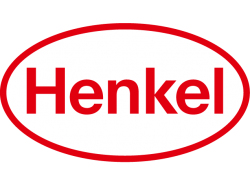 Dr Rainer Schoenfeld
Dr Rainer SchoenfeldGlobal market strategy head
Henkel
Germany
Foamed-in-place technical PU foam solutions are the state of the art in many industries. However, despite widespread use in the automotive industry, this solution has not previously been suited for acoustical foam. In the process, an air-impermeable skin is created on the foam surface, which impedes noise absorption and rules out the process for acoustic applications. This lecture will present a new process for the in-situ generation of a specialized α-Methyl-PU foam directly in the tire, and the subsequent acoustic activation of the foam surface using a laser. The advantages of this turnkey solution compared to the existing process will be shown.
What the audience will learn
- Challenges and disadvantages of the conventional foam-in-tire process
- Advantages of the Laser-Fit direct foam process and benchmarks from similar applications in the automotive industry
- How laser activation enhances the acoustical performance of the foam
- Benefits of the tailor-made Loctite-Laser-Fit α-Methyl-PU foam compared to ordinary PU foams
- Key figures and industrial robustness of the Laser-Fit turnkey equipment line and details of the typical deployment process
11:25
AI in mapping and unlocking spring vents and laser cleaning
 Lorenzo Casesa
Lorenzo CasesaSales manager
Greentech Laser Manufacturing SpA
Italy
The presentation concerns resonance in automatically opening spring vents, a patented technology supported by AI software, with 3D scan, 2D video system, robot, laser source and integrated with the customer's database. Imagine loading a full mold into a MEM machine and receiving it cleaned, with SV open and mapped with a final report telling you which SV is open or closed and where it is located, marked in red. Imagine doing it without manpower, everything in automatic mode. This is the future; this is MEM technology and KLRS technology.
What the audience will learn
- Laser cleaning and resonance as part of the transition to the green era to reduce the environmental impact of mold cleaning
- Reducing pollution and energy in mold cleaning
- Data recording the whole story of your molds
- Reducing energy cost and consumption
- Reducing manpower cost and alienating jobs
11:50
AI-driven innovation: precision in quality inspection of tires and rims
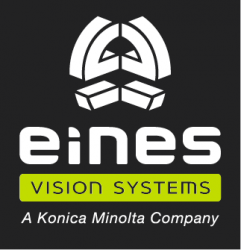 Juan Carlos Garcia
Juan Carlos GarciaVision expert and business developer manager, Germany and Austria
Eines Vision Systems
Spain
This session explores the latest tire and rim quality inspection technologies, focusing on automation and AI-driven solutions. Attendees will learn about the importance of automated systems in improving precision and reducing human error in manufacturing. The presentation will cover two advanced systems: the Automatic DOT Reader, which enhances tire traceability and compliance, and the ERSI (Eines Rim Surface Inspector), designed for high-precision rim defect detection. Participants will also discover the role of multi-error proofing solutions and robot guidance in optimizing production efficiency and sustainability, highlighting the latest advancements in AI applications within the tire industry.
What the audience will learn
- The importance of automated quality control in tire and rim manufacturing
- The application of machine vision systems and AI in error detection
- An overview of the Automatic Inline DOT Reader for tire traceability and compliance
- The rim surface inspection system for defect identification
- Benefits of multi-error proofing solutions for enhanced manufacturing efficiency and sustainability
12:15
Machine vision in the tire industry
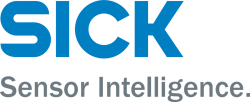 Patrick Hartmann
Patrick HartmannGlobal industry manager
Sick AG
Germany
Tire manufacturers must identify errors in the production process as early as possible to reduce scrap and therefore cost. This need has increased the number of machine vision applications throughout the whole production process, from the mixing area to final finishing. Because the main applications are connected to black rubber, 3D technology is seen as a reliable technology to solve these applications. On top of that, advances in image processing performance including artificial intelligence and deep learning are constantly improving the inspection capability in terms of flexibility and reliability.
What the audience will learn
- How 3D vision works (triangulation principle)
- How to achieve the highest quality images
- How to get a high-res 2D color image together with the 3D image
- How to make 3D vision technology easily accessible
- How AI can help to automate and optimize quality control tasks
12:40 - 13:45
Lunch
Day 3: Thursday, March 6
Casablanca
Modeling, simulation, testing and analysis - Day 3
09:00 - 15:00
Moderator
 Dr Matthias Wangenheim
Dr Matthias WangenheimAssistant director
Leibniz University Hannover
Germany
09:00
Estimating friction from surface roughness: is a PSD enough?
 Tom Sanders
Tom SandersDoctoral researcher
Loughborough University
UK
The most common road surface characterization metric used in friction models is power spectral density (PSD). However, PSDs tell us little about how roughness is distributed locally on the surface and may misinterpret the frequency signature of edge fall-offs as high-frequency roughness. A new method for surface-scan processing is presented, which uses the frequency content, as well as the height and gradient distributions of the roughness. This method results in the generation of realistic virtual surfaces which, combined with a novel approach for friction estimation, highlight the importance of accurate road representation.
What the audience will learn
- The current state of the art in friction modeling and surface characterization
- How the PSD is not always sufficient for characterizing road surface roughness
- Additional characterization metrics that contain more information and how these can be obtained
- How to generate synthtic surfaces from these metrics that could be used for a variety of road interaction problems
- A new method for predicting friction based on these more representative characterizations of surfaces
09:25
Coupled multiphysics strategy to monitor the health of rubbery structures
 Dr Mahmoud Assaad
Dr Mahmoud AssaadSenior technical advisor/global tire performance prediction, computational mechanics
Endurica / The Goodyear Tire & Rubber Company (Retired)
USA
When exposed to air, the long polymer chains of a rubbery object react with the oxygen molecules to form oxygenated functional groups which weaken the material and make it more susceptible to cracking. Higher temperature accelerates the diffusion of oxygen and the mechanisms of the ensuing chemical reactions. The property degradation of the oxidative rubber is manifested by embrittlement of its stiffness, reduction of its maximum chain extensibility and accelerated crack initiation and propagation. In this paper, a process is developed to measure the oxygen permeability, solubility and oxygen consumption rate to map the state of oxygen concentration.
What the audience will learn
- A process to measure the oxygen permeability, solubility and oxygen consumption rate to map the state of oxygen
- These properties are updated for elevated temperature generated by the structural dynamic deformation
- The fracture energies (T0, Tc) are measured at the relevant aerobic and thermal conditions and updated into Endurica DD/DT
- Demonstration of this crucial multiphysics mechanism in material design and engineering applications: two tire types (PCR, TBR) were analyzed
- The predicted performance and longevity are compared for the aerobic and anaerobic conditions
09:50
Optimizing vehicle dynamics and tire design/testing for electric vehicle development: key insights
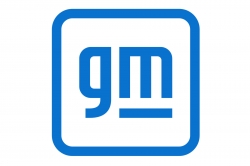 Dr Mohammad Behroozi
Dr Mohammad BehrooziVehicle dynamicist
General Motors
USA
Optimizing vehicle dynamics is essential to shaping the performance and handling of electric vehicles (EVs) in the rapidly evolving EV era. EV design requires a specialized approach due to unique factors like mass distribution, inertia characteristics and electric power delivery. This presentation focuses on how these distinct aspects drive the need for tailored tire design, optimization and testing methods. By addressing the specific challenges of EV tire dynamics, the presenter will explore effective strategies to enhance performance, efficiency, safety and comfort, leveraging advanced modeling and testing techniques that align tire characteristics with the unique dynamic profiles of EVs.
What the audience will learn
- How EV-specific mass distribution and inertia impact handling and stability
- The influence of electric power delivery on tire dynamics and traction
- Specialized tire design and testing methods tailored for EV performance and safety
- Strategies to enhance EV efficiency, comfort and dynamic response
- Advanced modeling techniques to align tire characteristics with EV handling needs
10:15
Effect of tire properties on wheel hop and shimmy
 Yixin Yang
Yixin YangPhD student
Loughborough University
UK
The presentation draws a link between tire attributes and vehicle dynamics/stability. It considers front wheel shimmy and rear wheel hop as two examples, to explore how inflation pressure, pneumatic trail and other tire parameters influence the occurrence of undesirable wheel oscillations, leading to inferior dynamic performance. To address the problem, a transient Magic Formula tire model with pressure sensitivity is combined with a shimmy model and a rear wheel hop model. Bifurcation analysis is performed using these models and the results provide a theoretical reference for the relationship between tire parameters and oscillatory/unstable wheel shimmy and hop responses.
What the audience will learn
- The connection between tire properties and vehicle dynamics/stability
- The effects of non-linearities in tire behaviors on shimmy and wheel hop based on bifurcation diagrams
- Theoretical guidance on vibration attenuation from a perspective of tire characteristics
- Tire model fidelity needed to predict critical vehicle behaviors
- What tire model behaviors are required to more accurately capture the effect of tires on vehicle handling stability
10:40 - 11:00
Break
11:00
A comprehensive study on vehicle fuel efficiency and influencing parameters
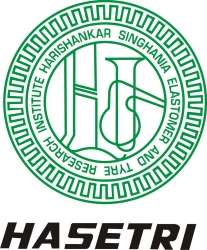 Avinash Tomer
Avinash TomerSenior engineer
HASETRI
India
The ongoing global warming crisis emphasizes the critical role of CO2 emissions and the impact of vehicle fuel economy. Current rolling resistance (RR) and fuel efficiency (FE) test methods mainly use controlled laboratory conditions, which may not accurately reflect real-world scenarios, especially regarding ambient and surface temperature dependence. This study aims to establish correlations between these operational parameters using SAE/ISO methods and proprietary outdoor measurement techniques. Key performance indicators include RR and FE trends with temperature variations in both lab and outdoor settings, with tests on vehicles and skid trailers for comprehensive analysis with reference to Indian conditions.
What the audience will learn
- The correlation between rolling resistance (RR) and temperature variations under controlled laboratory conditions
- How RR trends vary with temperature in outdoor settings using vehicle-based testing methods
- To compare and correlate real-world conditions, particularly the effects of ambient and surface temperatures with lab tests
- The relationship between fuel efficiency (FE) and temperature variations in outdoor conditions and how to correlate it with RR data
- Insights into establishing testing methods and correlations specific to Indian operational conditions
11:25
Rethinking longitudinal grip simulation from advanced real condition measurements
 Carlos Nerini
Carlos NeriniManaging director and co-founder
WOM Testing Technologies
Italy
It is well known that tire longitudinal grip characterization relies on a non-physical tire radius. However, limited research has explored the impacts of this convention on tire modeling and real-time simulation. This presentation discusses the findings of applied research that critically examines this issue. Groundbreaking results will be presented, showcasing the use of cutting-edge technology to measure the dynamic loaded radius of a tire under real-world conditions. These outcomes enable the development of high-realism tire models, which are crucial for virtual testing and enhancing vehicle safety
What the audience will learn
- Longitudinal grip characterization and slip ratio convention
- Brand-new technology for advanced tire measurements in real-world conditions
- Dynamic loaded radius under real-world conditions
- Simulation limitations arising from slip ratio convention
- Benefits of an innovative approach to longitudinal grip characterization
11:50
New ISO/AWI 11010-3: generation process of tire model parameter sets
 Dr Christian Bachmann
Dr Christian BachmannSenior manager tire technology
fka GmbH
Germany
The definition and selection of suitable tire simulation models and their parameter sets is an important step to achieve reliable simulation results. As there is no global standardization, various data sources and characterization procedures including an unknown range of differences in tire operation points can lead to significant differences in tire model parameters. This project will increase the comparability and transparency of model parameter sets which are created for a certain application based on a requirement list. The supplementary report allows evaluation of suitability for a certain application and comparability to other similar parameter sets.
What the audience will learn
- The general process chain of tire model parameterization
- Status quo in tire model parameterization
- Influencing factors on the parameterization results
- Importance of and requirements for consistent input definitions
- Status of the ISO/AWI 11010-3 activities and targets
12:15
Cornering stiffness in quasi-steady and dynamic inner drum testing
 Dr Matthias Wangenheim
Dr Matthias WangenheimAssistant director
Leibniz University Hannover
Germany
Measurements of tire lateral force versus slip angle are often performed in a quasi-steady manner, i.e. the slip angle is held constant or varied comparably slowly. The presentation covers the utilization of a new inner drum test rig to contrast these types of measurements with dynamic tests, in which the slip angle is altered with varying frequencies and varying amplitudes around several operating points. Two types of surfaces (rough and smooth) are utilized. This enables the identification of specific time lags between slip angle, side forces and contact temperatures for each operating condition.
What the audience will learn
- New highly dynamic inner drum test rig
- High-frequency and large amplitude slip angle variations
- Different time lags for forces and temperatures at dynamic driving maneuvers
- Effect of rough and smooth road surfaces on dynamic slip angle changes
- Comparison of winter and summer tire response on dynamic slip angle variations
12:40 - 13:45
Lunch
13:45
Experimental investigation: compound viscoelasticity and road roughness effects on tire
 Raffaele Maglione
Raffaele MaglionePhD candidate
University of Naples Federico II
Italy
The global characteristics of tires are significantly influenced by viscoelasticity and road roughness; however, isolating the influence of these parameters from other factors is challenging. This study proposes a synthesis of an experimental campaign, conducted both indoors and outdoors, including different compounds on distinct road surfaces, to investigate possible direct links between surface roughness, viscoelasticity and tire global characteristics such as adherence level and stiffness. By uniforming carcass design and controlling operating, thermodynamic and wear conditions, the study aims to isolate and examine these critical influences in a completely novel multidimensional way.
What the audience will learn
- Compound viscoelasticity and road roughness influence key tire characteristics like grip and stiffness
- Methods for isolating specific effects in tire performance by controlling carcass design, operational and thermodynamic conditions
- How different tire compounds affect performance under identical structural and environmental conditions
- The role of surface roughness in tire-road interaction and its measurable impact on overall tire behavior
- The correlation between viscoelasticity, road texture and tire performance metrics through experimental testing
14:10
Comparing results from different flat-belt testing machines
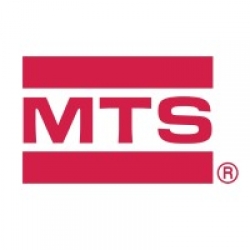 Anders Maki
Anders MakiStaff engineer
MTS Systems Corporation
USA
A comparison of tire measurement results used to evaluate tires for vehicle performance will be shown between two different model flat-belt systems to determine the correlation between such systems. This will help data users to understand whether the model of the flat-belt system is important to the data.
What the audience will learn
- The results of correlating on-center handling parameters between two flat-belt systems
- Tire stiffness correlation between two flat-belt systems
- Relaxation length correlation between two flat-belt systems
- Cornering power correlation between two flat-belt systems
- Peak friction and cornering stiffness using a slip angle sweep correlation between two flat-belt systems.
14:35
New methodology to determine fatigue crack growth critical energies
 Dr Mathieu Badard
Dr Mathieu BadardDMA expert
Metravib Material Testing
France
The appearance and propagation of cracks are major problems for the tire’s lifespan. Fatigue crack growth testing methods make possible the accurate measurement of cracks in a rubber compound specimen under controlled dynamic excitation. Nevertheless, performing the test with adequate energy to obtain a relevant characterization of a specific material may be tough and time-consuming. Test optimization is possible when determining the lowest tearing energy (T0) generating a crack growth and the highest (critical) tearing energy (Tc) beyond which the specimen is rapidly totally cut. This presentation highlights a new methodology to determine both T0 and Tc.
What the audience will learn
- Process to follow crack growth
- Crack growth theory
- The critical energies T0 and Tc
- How the combination of an optical system and a DMA allows crack growth to be followed